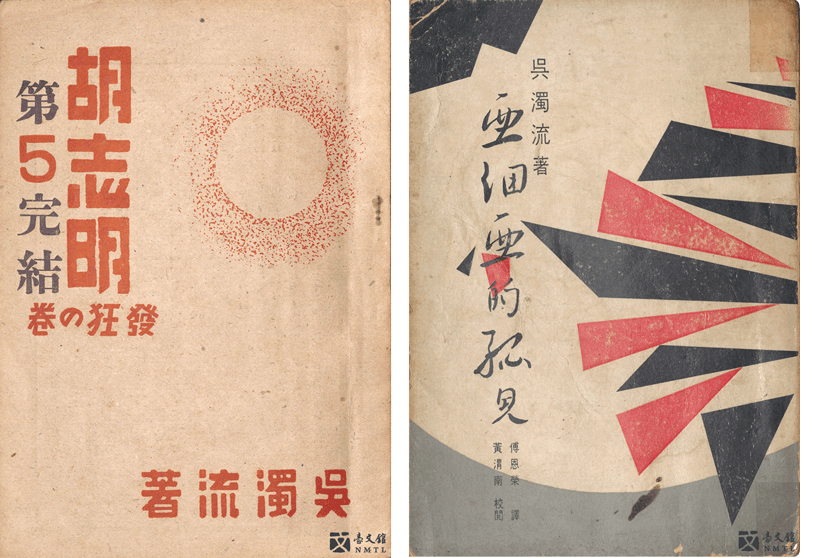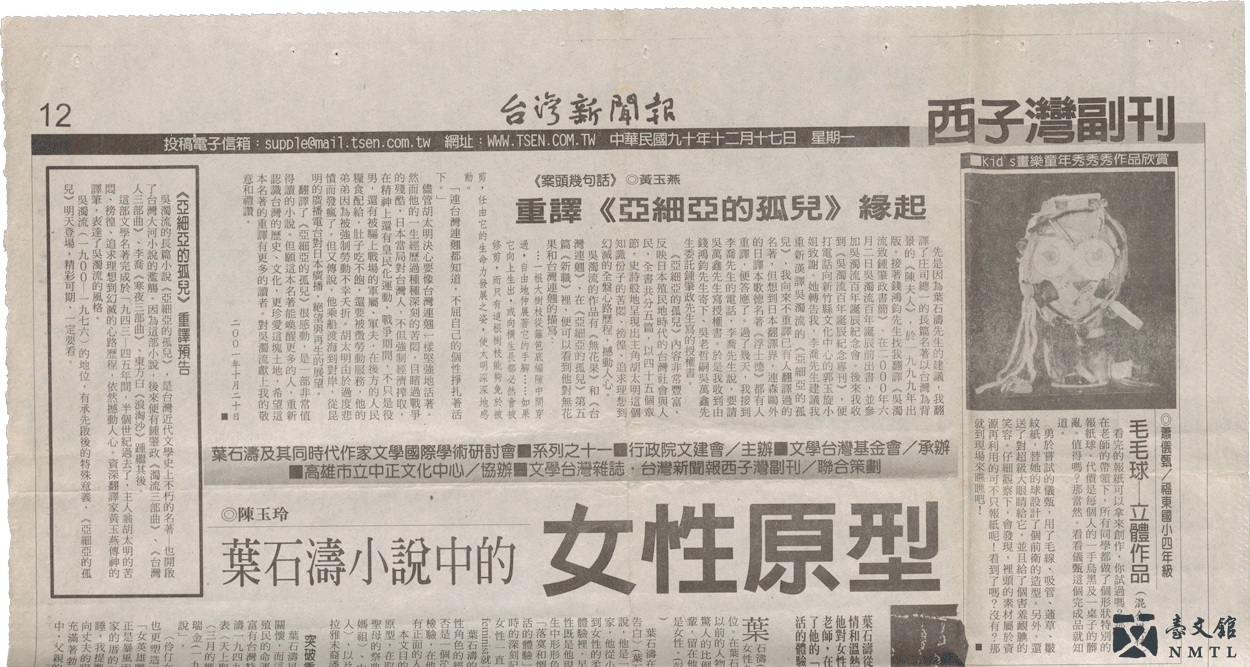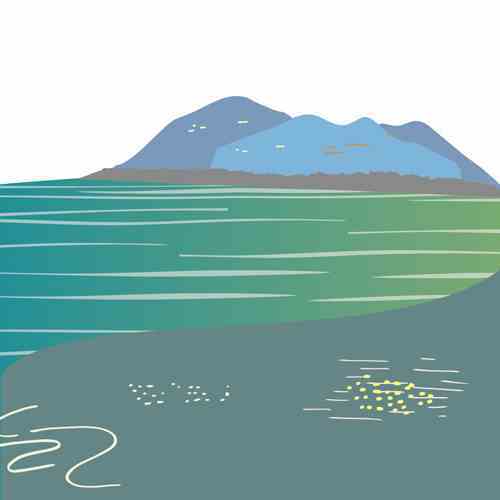Wu Cho-liu|Yeh Bu-yueh|Chung Chao-cheng|Q&A
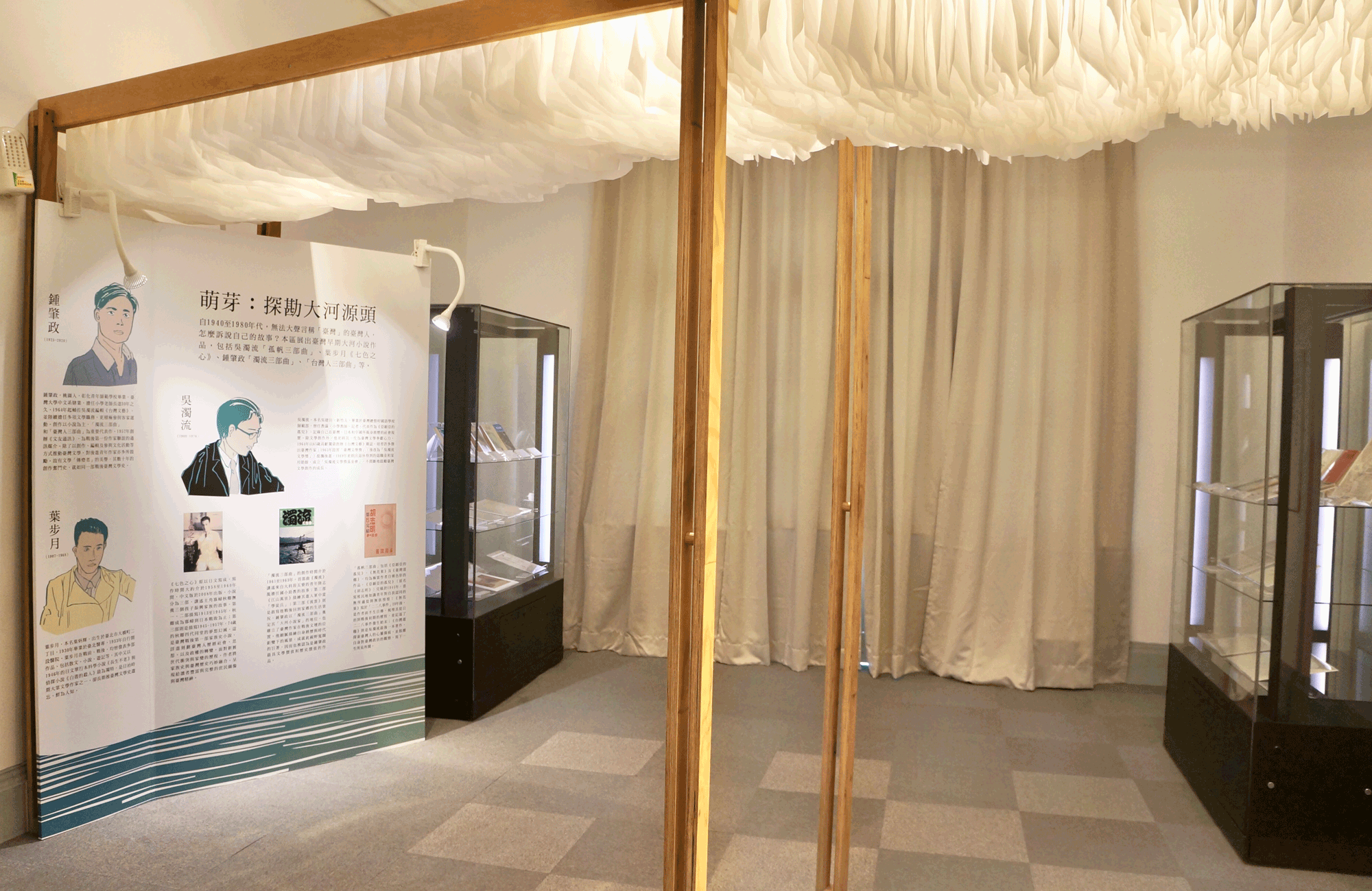
From the 1940s to 1980s, how did Taiwanese people who could not say the name of Taiwan out loud tell their own stories? This section highlights early examples of romans-fleuves in Taiwan, including Wu Cho-liu's LONELY SAIL TRILOGY, Yeh Bu-yue' HEART OF SEVEN COLORS, Chung Chao-cheng's MUDDY WATER TRILOGY and TAIWANESE TRILOGY.
Wu Cho-liu (1900-1976)

Born Wu Chien-tien. A native of Hsinchu, Wu graduated from the Education Division of the Mandarin School in the Taiwan Governor General's Office. He used to be a teacher and a reporter. ORPHAN OF ASIA, his masterpiece, recorded his personal experiences of social reality while in Taiwan, Japan and China. Besides literary writing, he had also contributed immensely to the development of Taiwanese literature. In 1964, at the age of 65, he founded the magazine TAIWAN LITERATURE AND ART, which became the cradle of many outstanding Taiwanese writers. In 1965, he established the "Taiwan Literary Award" (later renamed "Wu Cho-liu Literary Award") to support aspiring young writers. In 1969, he even donated his own pension funds and part of his own savings to set up the "Wu Cho-liu Literary Award Foundation", which provided continuous encouragement to the growth and development of Taiwanese creative writing.
📚 LONELY SAIL TRILOGY 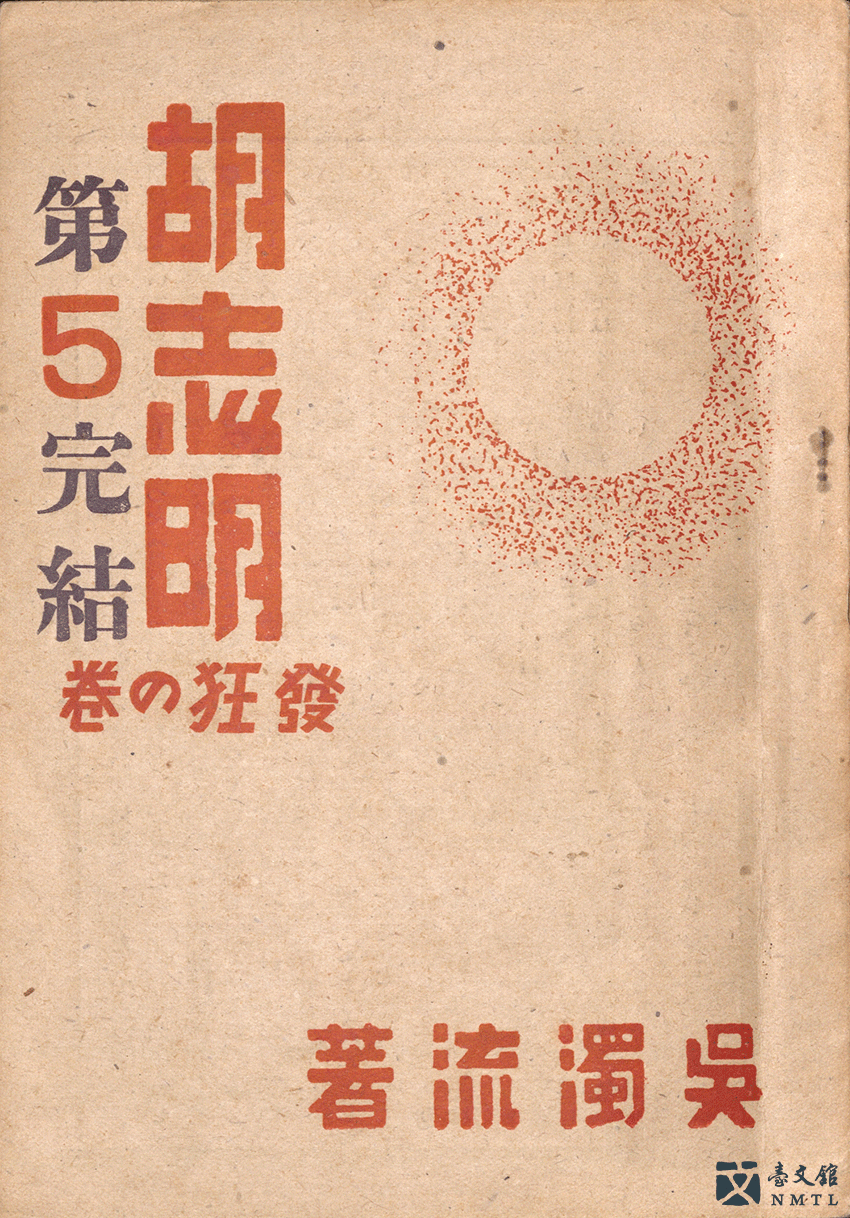
LONELY SAIL TRILOGY, including ORPHAN OF ASIA, THE FIG TREE, and FORMOSAN WEEPING FORSYTHIA, are all highly autobiographical works by Wu. ORPHAN OF ASIA (originally named HO CHI MINH) was completed in 1945. It is the story about a young intellectual who was doubtful and at a loss about his own identity in a colony. THE FIG TREE was written 20 years after the "228 Incident". It was Wu's autobiography of his first half of life, trying to make sense of the time from the Japanese colonial rule to post-war period, in which he also included a full account of the 228 Incident. FORMOSAN WEEPING FORSYTHIA was Wu's last work, in which he explored Taiwanese people's traumatized mentality, and shared his lifelong observations of Taiwanese politics.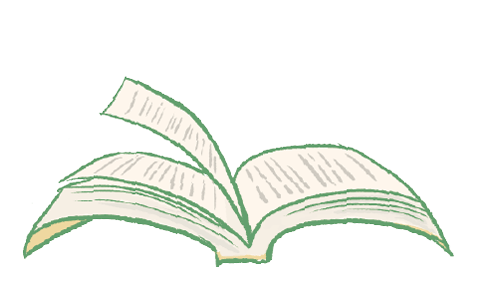
Although they have no knowledge and learning, their lifestyle has a close connection with hometown, and their inborn sentiment towards living has a solid temperament that is not moved by fame and fortune, or propaganda. Their only wish is to live and die in their hometown, and they will never be swayed by others.
──Wu Cho-liu, ORPHAN OF ASIA
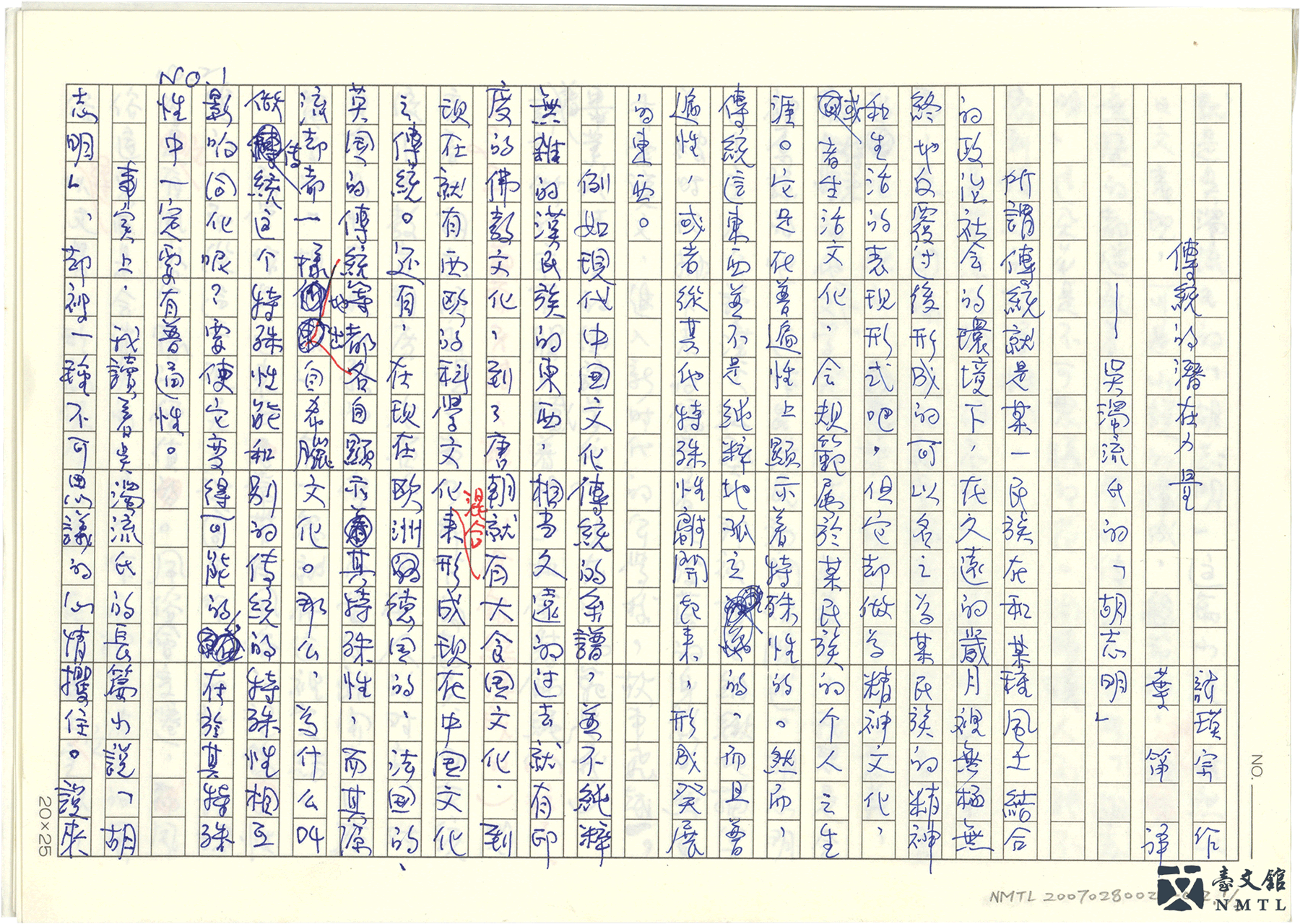
🌊 Long Ying-zong, "The Potential Power of Tradition: Wu Cho-liu's HU CHIH MING"|Translated by Ye Di, 1946.
This article is Long Ying-zong's review of Wu Cho-liu's long novel HU CHIH MING. Long praises Wu for his traditional spirit in passing on the Han Chinese culture. Using literature to preserve disappearing folklore and customs, Wu fulfilled his literary mission as a writer. However, Long also mentions that Wu's work has yet to be seen having a clear central idea, thus appearing unorganized and loose, regarding which Long attributed to Wu's attitude towards literature. (Donated by Yeh Chen-chen / From the National Museum of Taiwan Literature permanent collection)
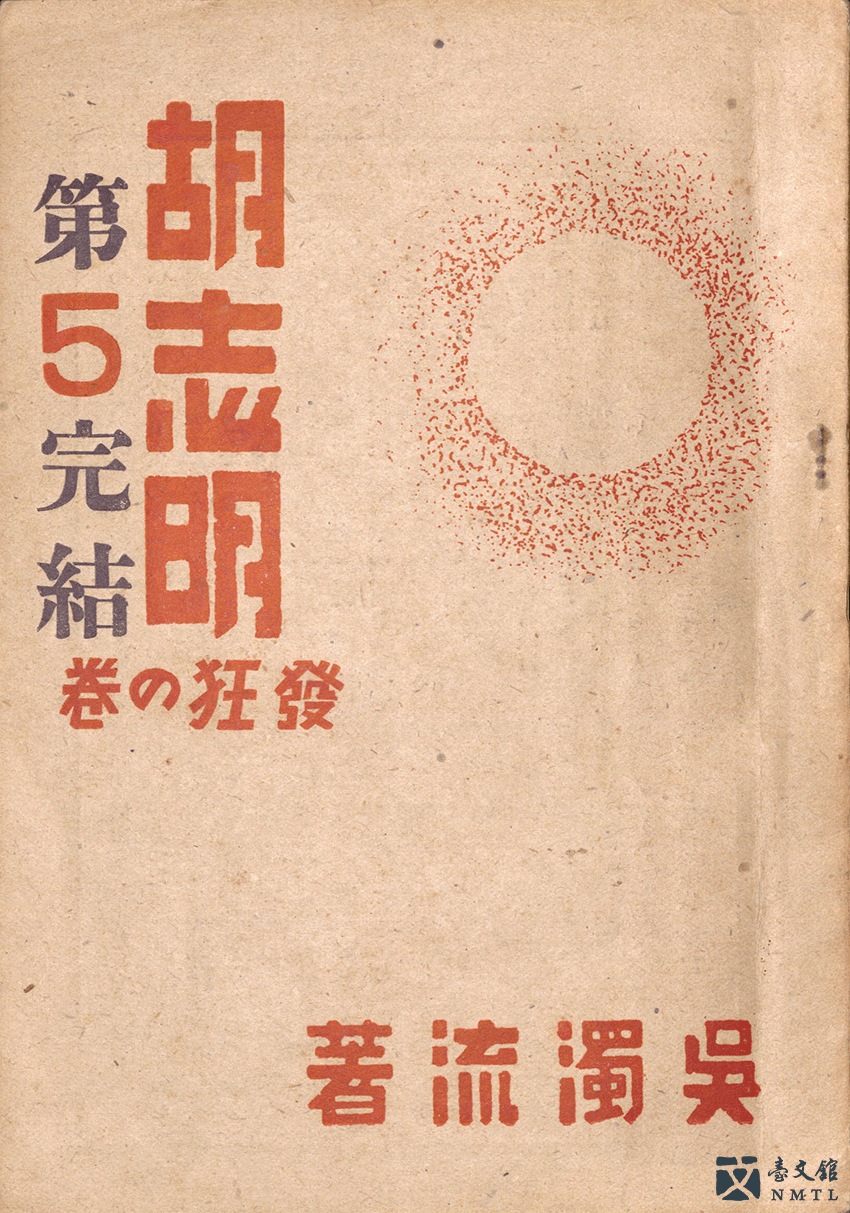
🌊 Wu Cho-liu, HU CHIH MING, Part 5: COMPLETE MADNESS|Taipei: Seio Bookstore, 1948. (Donated by Liu Kei-chuan / From the National Museum of Taiwan Literature permanent collection)
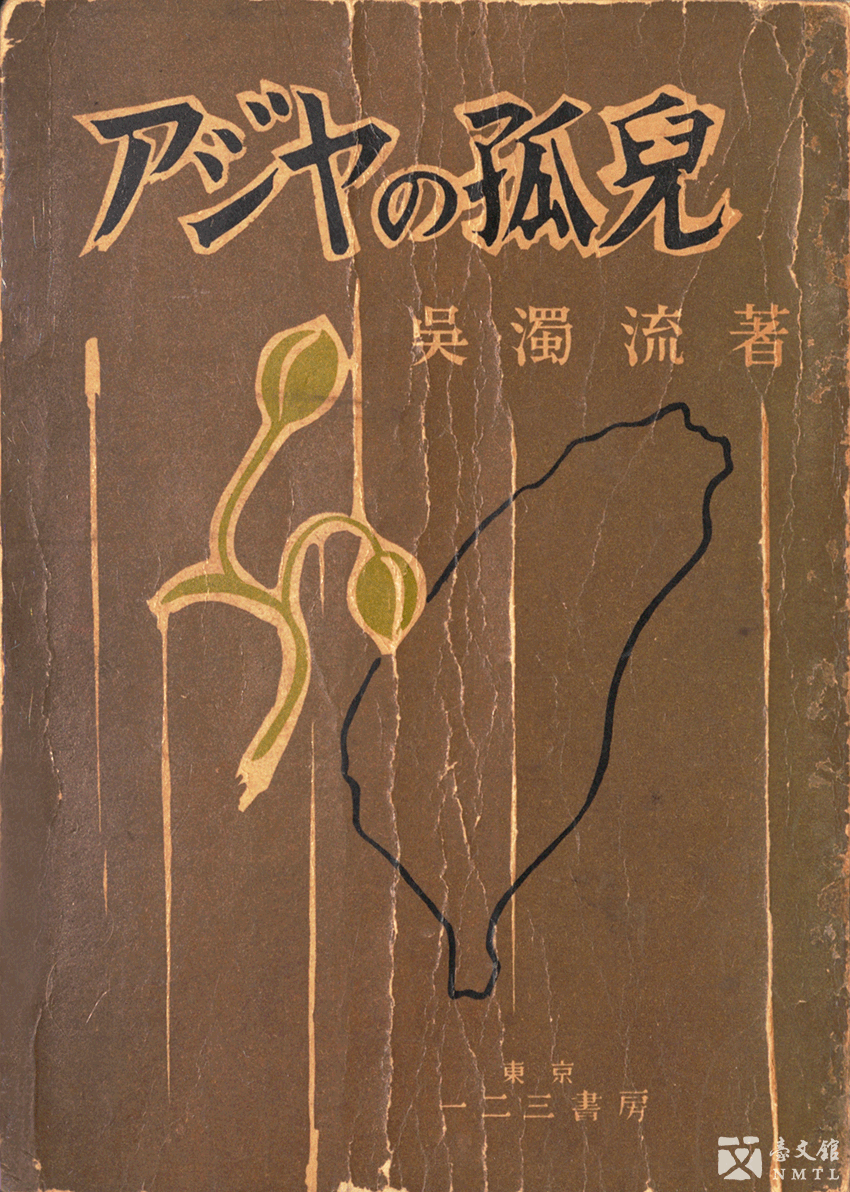
🌊 Wu Cho-liu, ASIA'S ORPHAN|Tokyo: Hifumishobo Co. Ltd., 1956.
In 1956, Wu Cho-liu's long novel HU CHIH MING, which was written in 1943, was renamed ASIA'S ORPHAN by the Japanese publisher Hifumishobo when issuing its Japanese edition. Later, it became the subsequent Chinese versions of LONELY SAIL and ORPHAN OF ASIA. The story reflected the discrimination and distress felt by Taiwanese during Japanese rule, and also presented the identification complex of Taiwanese while under colonial rule. (Donated by Long Ying-zong / From the National Museum of Taiwan Literature permanent collection)
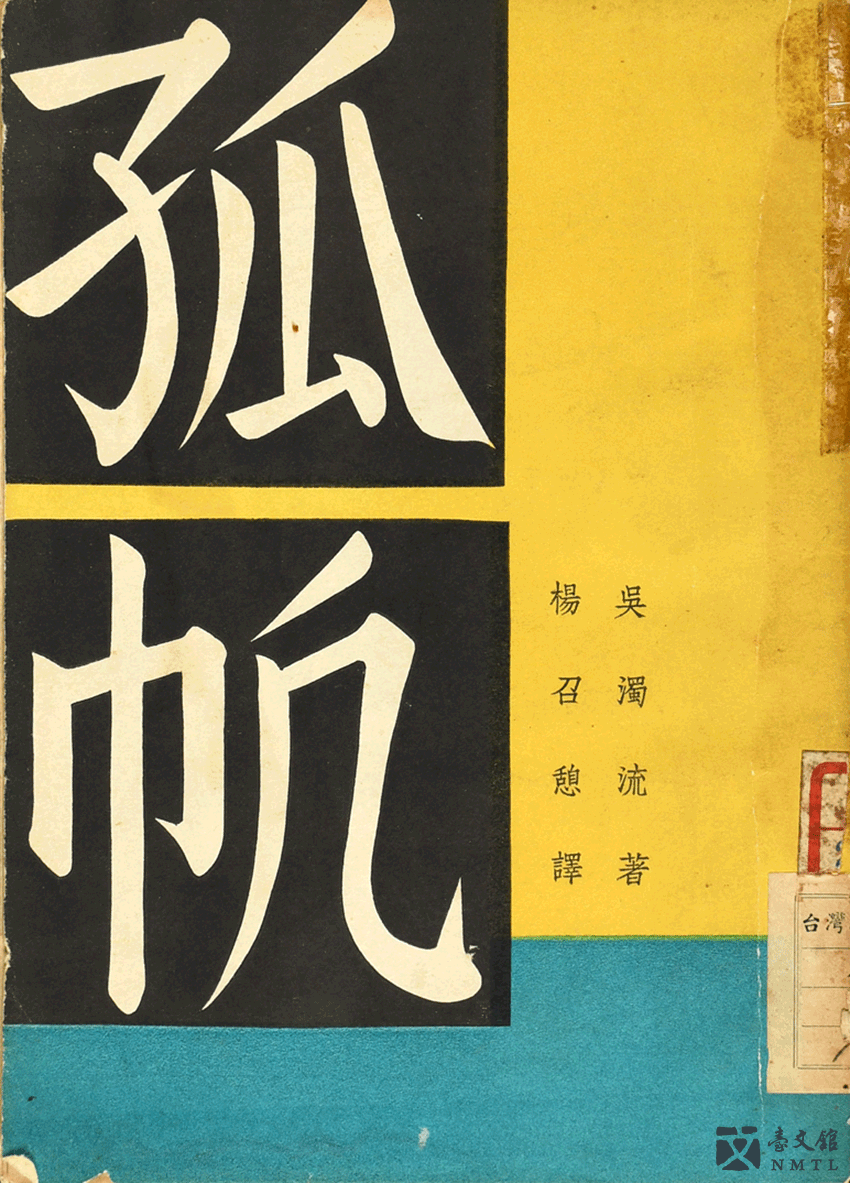
🌊 Wu Cho-liu, LONELY SAIL|Translated by Yang Chao-chi. Kaohsiung: Huang Ho Publishing House, 1956. (Donated by Lin Jui-ming / From the National Museum of Taiwan Literature permanent collection)
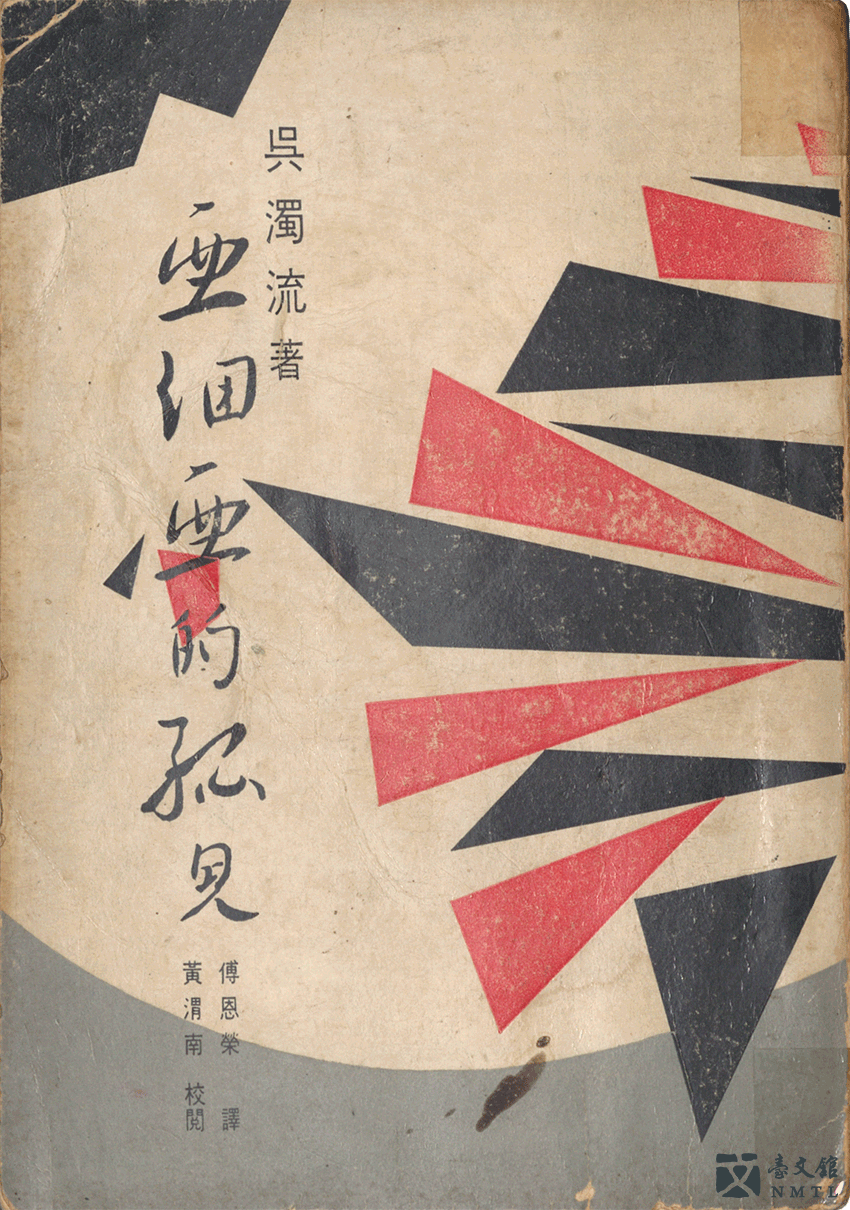
🌊 Wu Cho-liu's ORPHAN OF ASIA|Translated by Fu Enrong. Published by Nanhua Publishing House (Taipei), 1962. (Donated by Lin Jui-ming / From the National Museum of Taiwan Literature permanent collection)
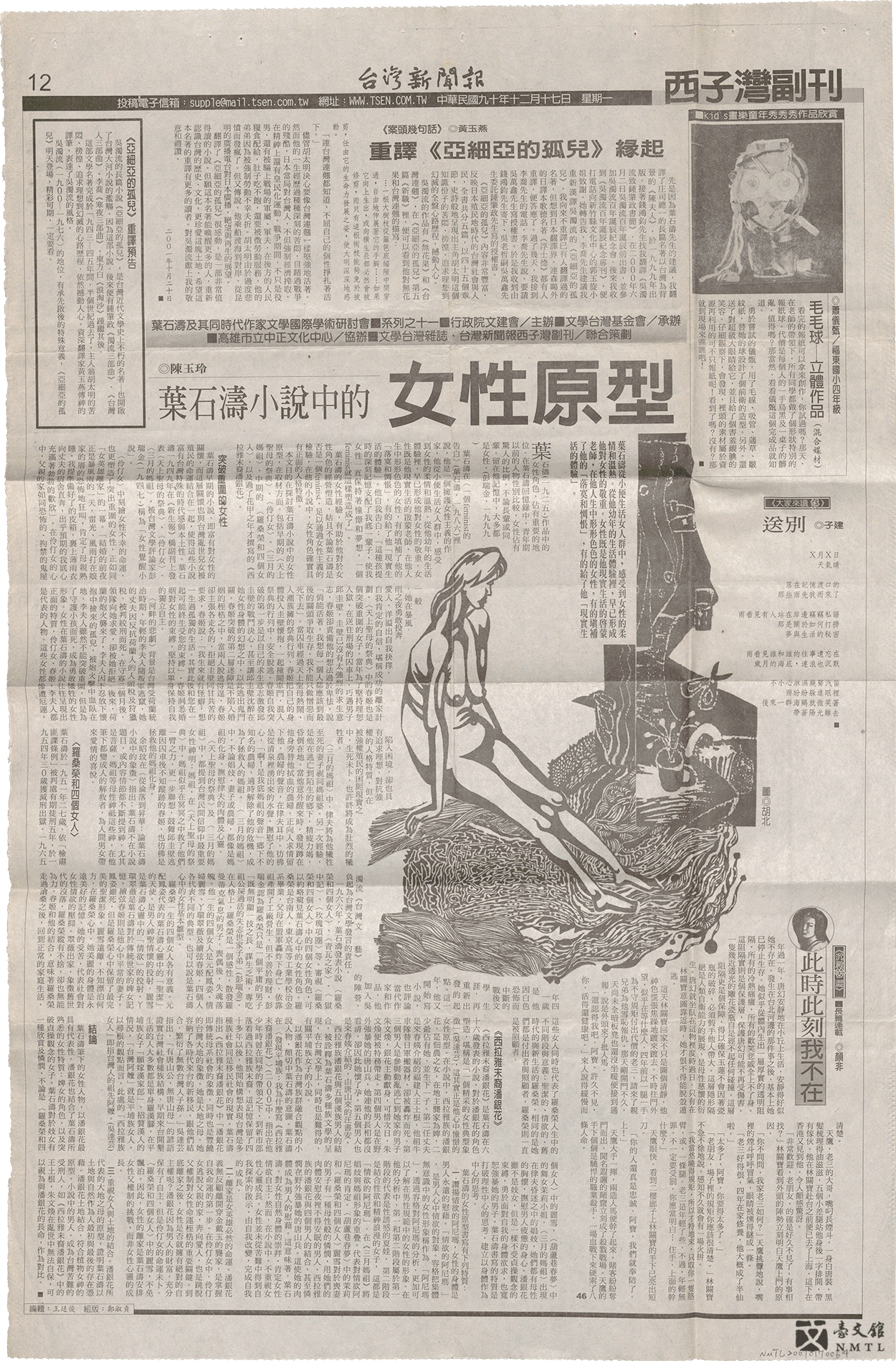
🌊 Huang Yu-yen, The Origin of Re-translating ORPHAN OF ASIA, SIZIHWAN SUPPLEMENT, TAIWAN NEWS|Dec. 17, 2001.
Originally written in Japanese, ORPHAN OF ASIA's Chinese editions were translated by Yang Chao-chi and Fu Enrong. The more widely known version nowadays was translated by Huang Yu-yen. This article is the translator's own account of the reason for the re-translation. (Donated by Huang Yu-yen / From the National Museum of Taiwan Literature permanent collection)
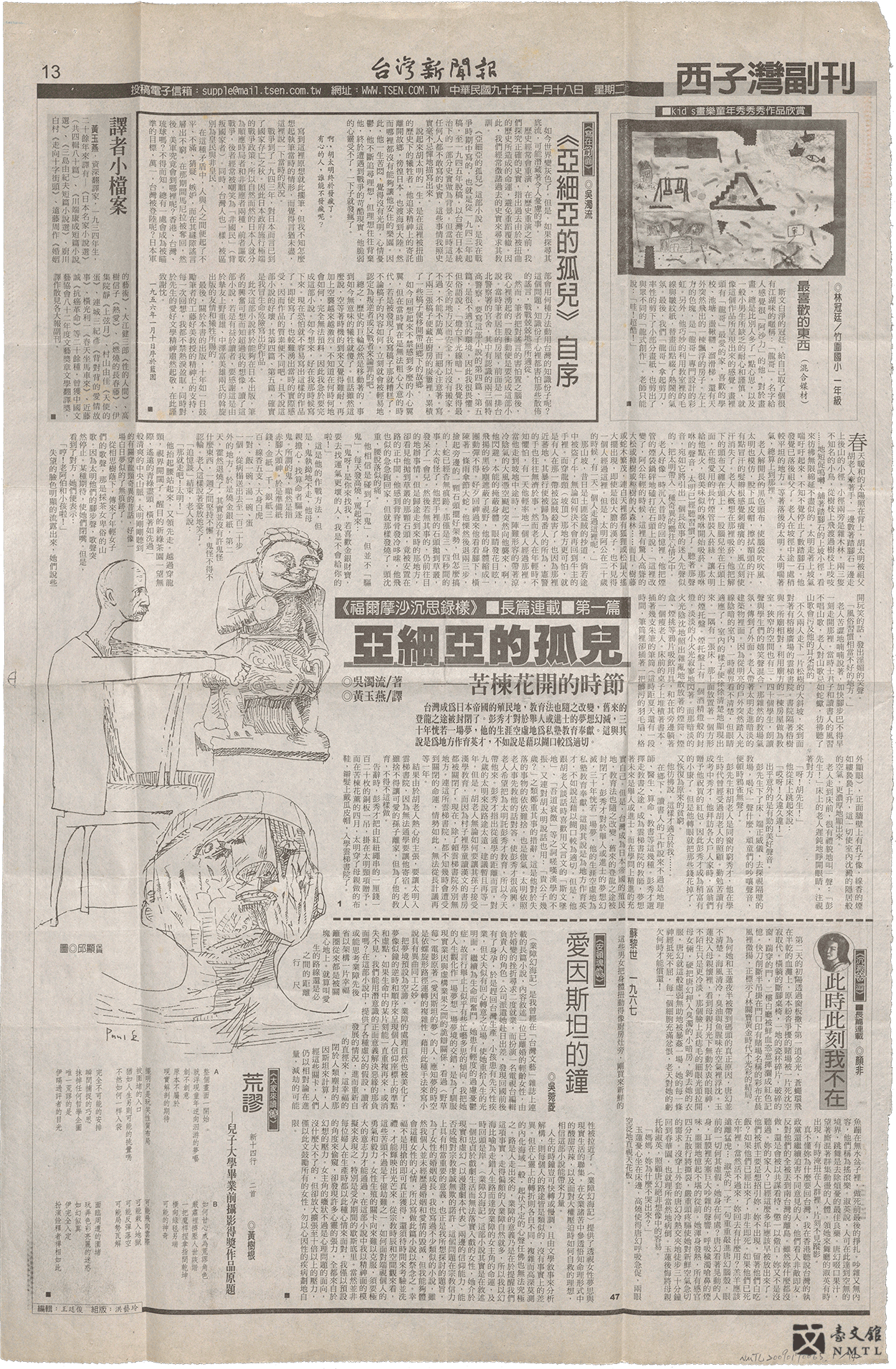
🌊 Wu Cho-liu, ORPHAN OF ASIA 1, SIZIHWAN SUPPLEMENT, TAIWAN NEWS|Translated by Huang Yu-yen.
Huang Yu-yen's re-translation of ORPHAN OF ASIA had been published in a series in the SIZIHWAN SUPPLMENT of the TAIWAN NEWS from Dec. 18, 2001, which consisted of a total of 159 articles. In 2005, the Cultural Affairs Bureau of Hsinchu County Government consolidated the articles into a printed publication. (Donated by Huang Yu-yen / From the National Museum of Taiwan Literature permanent collection)
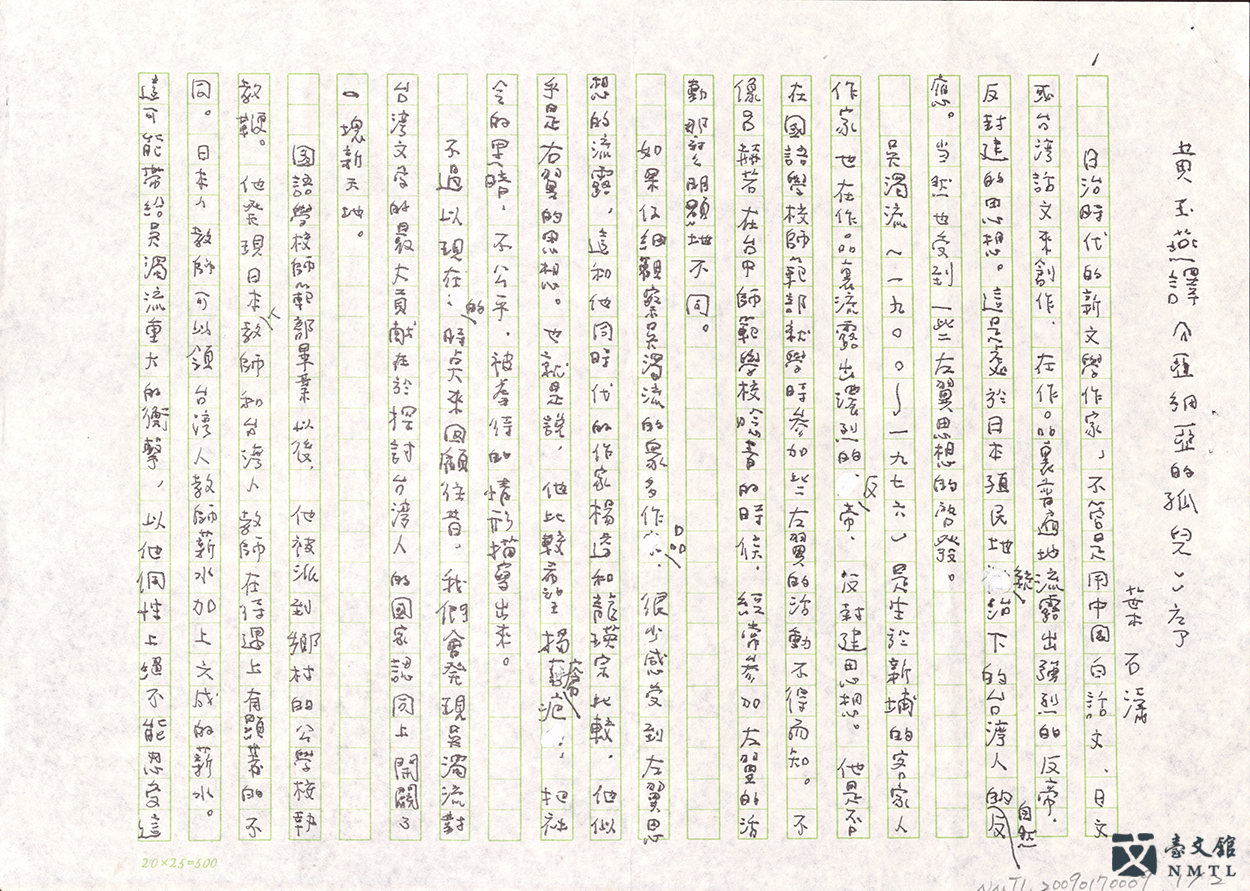
🌊 Yeh Shih-tao, Preface to ORPHAN OF ASIA, as translated by Huang Yu-yen|This article is the Preface written by Yeh Shih-tao for Huang Yu-yen's translated version of ORPHAN OF ASIA. It provides a brief outline of Wu Cho-liu's life and happenings, and the background for the creative process of ORPHAN OF ASIA. In addition, it also stresses that the new literature authors during the Japanese occupation, mostly like Wu Cho-liu, did not know that Taiwan is not Asia's orphan as they saw it, but rather an independent entity that can have its own nation. (Donated by Huang Yu-yen / From the National Museum of Taiwan Literature permanent collection)
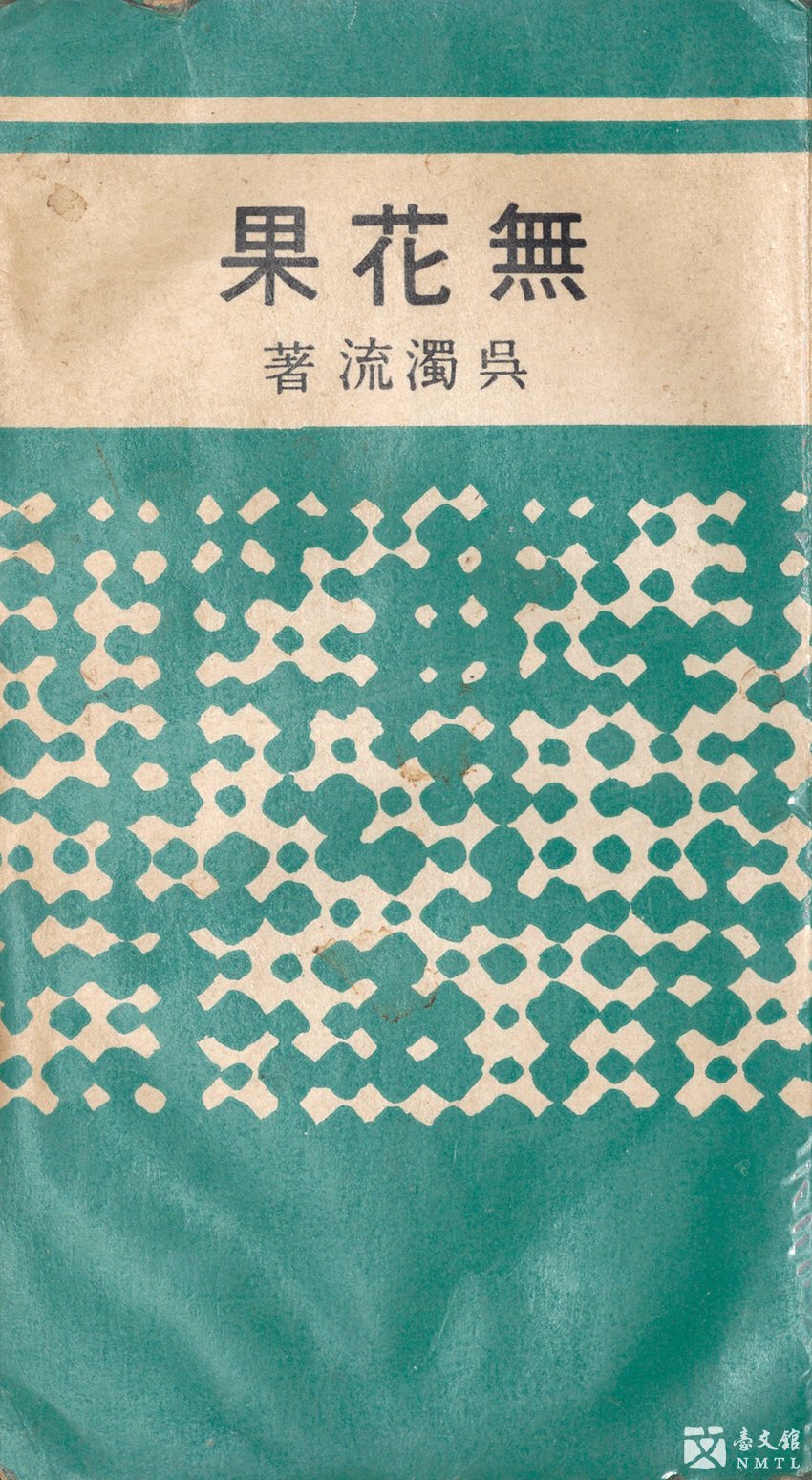
🌊 Wu Cho-liu, THE FIG TREE|Taipei: Lin Po Publishing Co., 1970.
THE FIG TREE was written in 1968, when Wu Cho-liu was 69 years old. In this autobiographical novel, he candidly described his personal experience during the 228 Incident, and attempted to give an account of his lifelong beliefs and achievements. It is also a record of his psychological development along the road of creative writing, and a written account of the history belonging to Taiwanese. (Donated by Huang Te-shih / From the National Museum of Taiwan Literature permanent collection)
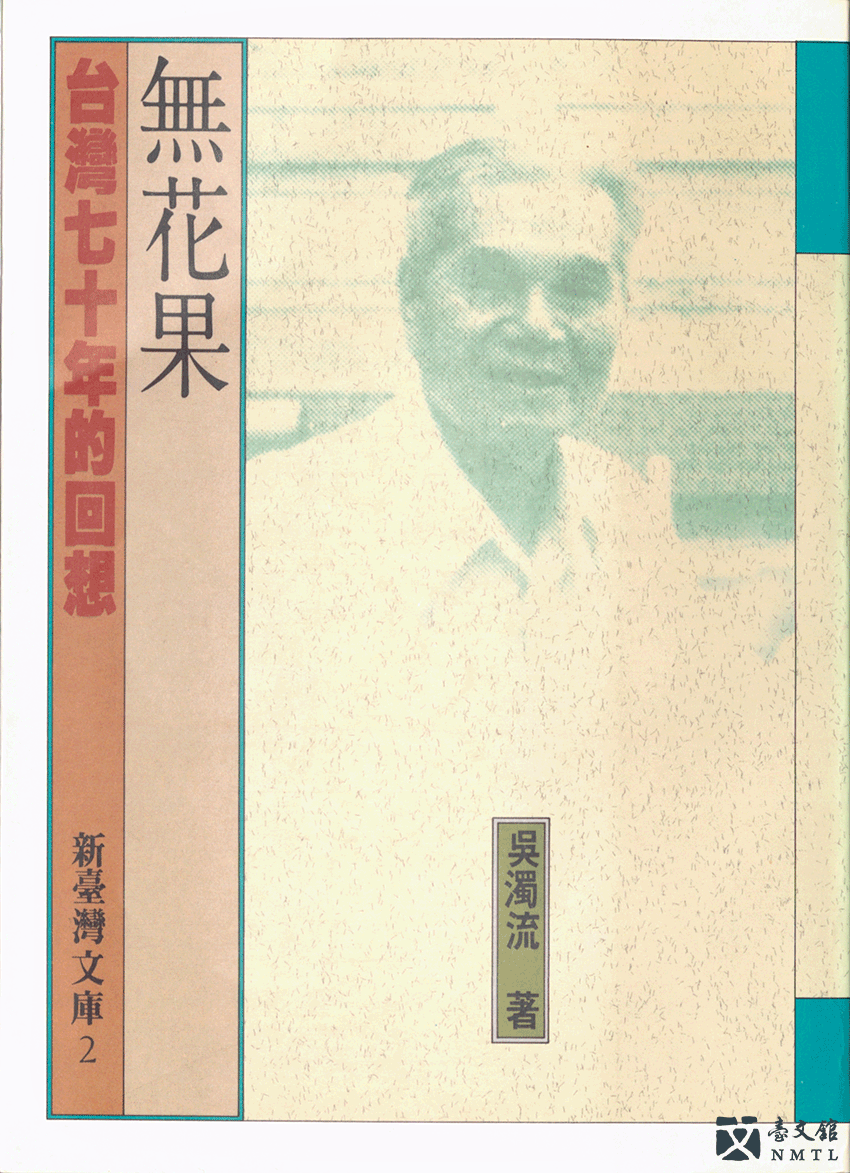
🌊 Wu Cho-liu, THE FIG TREE|Taipei: Avanguard Publishing House, 1988. (Donated by Li Kuei-Hsien / From the National Museum of Taiwan Literature permanent collection)
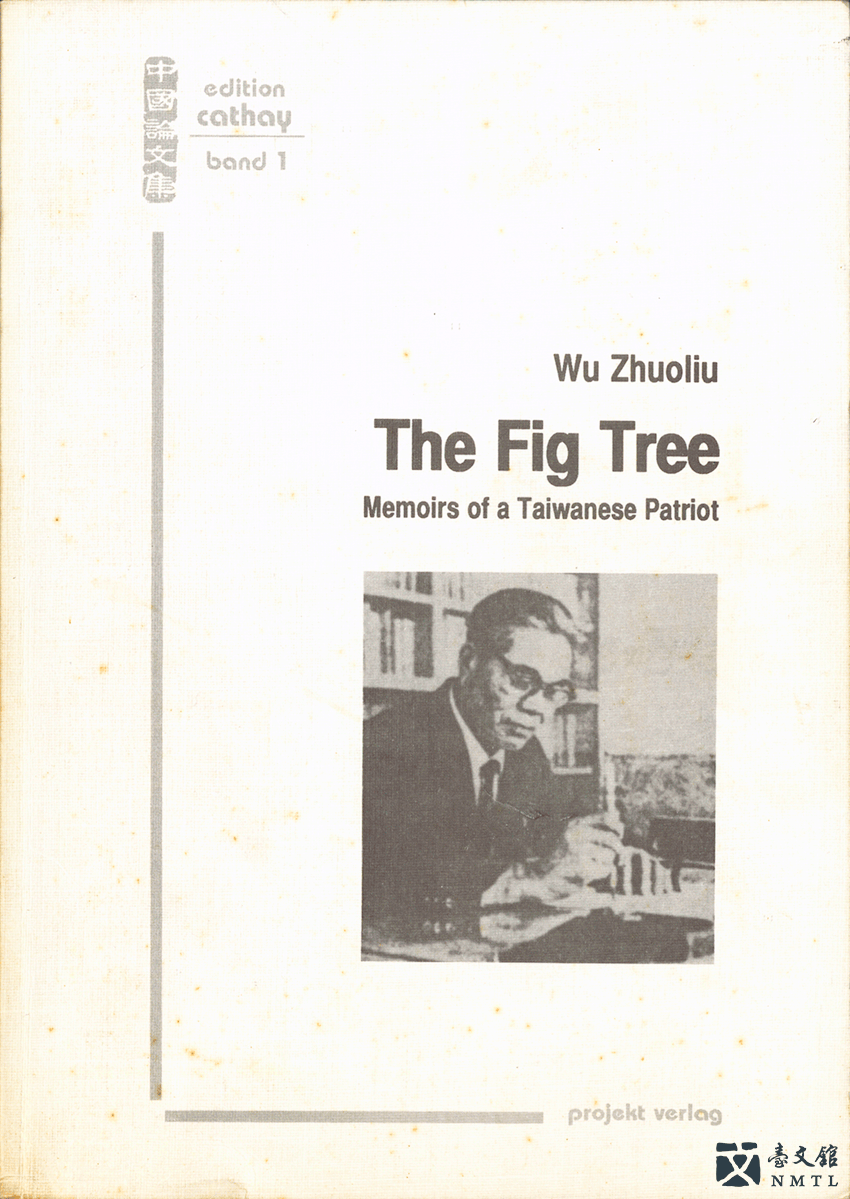
🌊 Wu Cho-liu, THE FIG TREE: MEMOIRS OF A TAIWANESE PATRIOT|Project Publishing House, Dortmund, 1994.
This book is an English translation of THE FIG TREE which was published in Germany, with the subtitle "Memoirs of a Taiwanese Patriot," and was enlisted as the first in A COLLECTION OF CHINESE LITERATURE as edited by German sinologist Helmut Martin. In the German Preface, Martin introduced the background of Taiwanese literature, Wu Cho-liu's literary career, the resistance in Taiwan literature, nationalistic awareness and its development, and the prospects of Taiwanese literature; in so doing he presented his readers with the importance of THE FIG TREE. (Donated by Liang Ching-feng / From the National Museum of Taiwan Literature permanent collection)
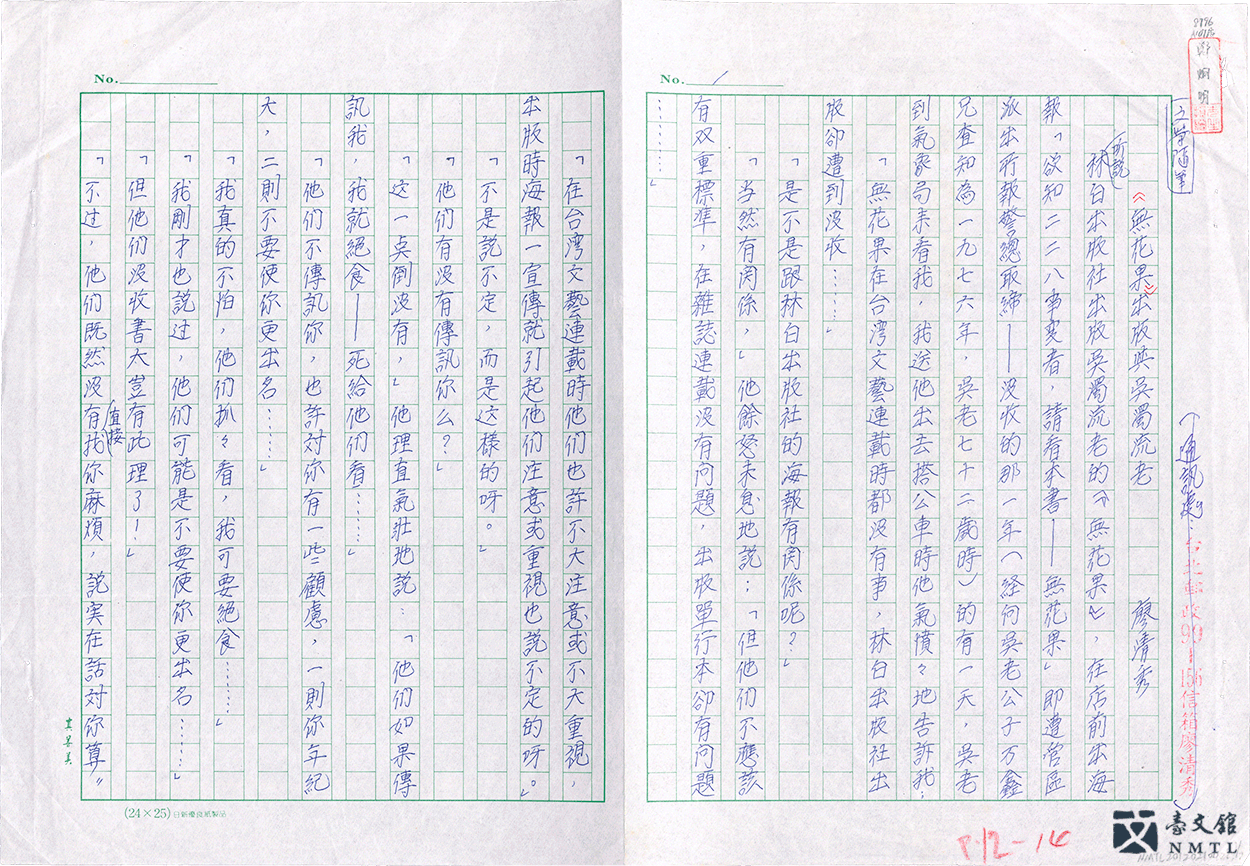
🌊 Liao Ching-Hsiu, Publication of THE FIG TREE and Wu Cho-liu|Published in Issue 12 of LITERARY TAIWAN, October 1994.
This article records the conversation between the author and Wu Cho-liu about the incident when Wu was being clamped down at the time of the publication of THE FIG TREE. (Donated by Literary Taiwan Magazine / From the National Museum of Taiwan Literature permanent collection)

🌊 Wu Cho-liu, FORMOSAN WEEPING FORSYTHIA|Taipei: Taiwan Literary Arts Publishing House, 1987.
Wu Cho-liu wrote FORMOSAN WEEPING FORSYTHIA in Japanese as a semi-autobiographical long novel. It is an account of the Taiwanese society from the Japanese rule to the early post-war period. He began writing in September, 1971, and completed it in December, 1974. He translated the first 8 chapters into Chinese and published them in TAIWAN LITERATURE AND ART from April 1973 to October 1974. The remaining manuscripts were being kept by novelist Chung Chao-cheng, which Wu advised Chung not to publish until after 10 to 20 years. In 1986, Chung translated the last 6 chapters into Chinese and published them in TAIWAN NEW CULTURE magazine, due to which the magazine was investigated and subsequently banned. (Donated by Chang Chi-kuang / From the National Museum of Taiwan Literature permanent collection)
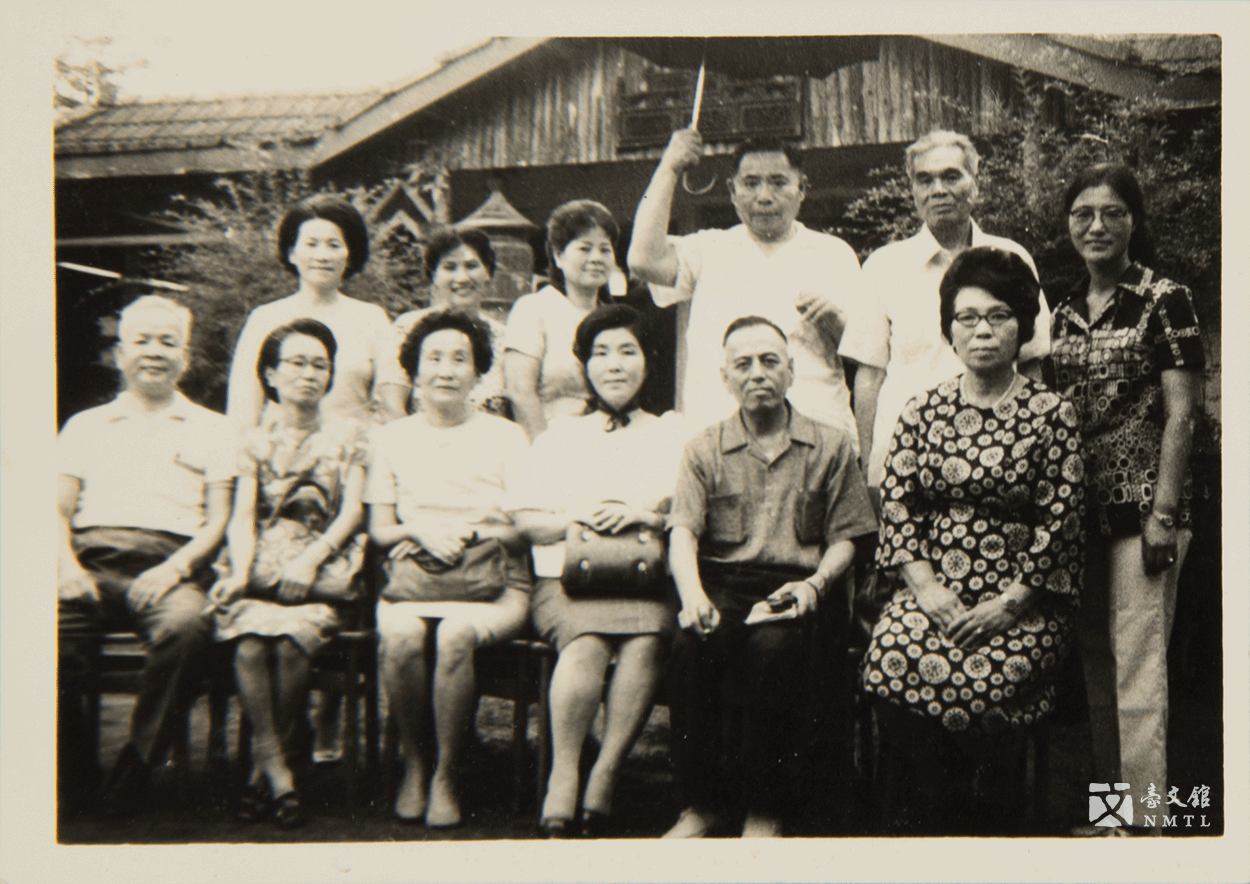
🌊 Wu Cho-liu, Wu Yung-fu, Chen Hsiu-his in a group photo|(Donated by Kuo Sheng-ping / From the National Museum of Taiwan Literature permanent collection)
Yeh Bu-yue (1907-1968)

Born Yeh Ping-hui, in Nichome, Ohashicho, Taihoku (now Taipei City), Yeh graduated from Taipei College of Medicine in 1930, and in 1933 opened his own hospital. Yeh released numerous publications before and after the war, which included prose, novels, and travel diaries. The scientific novel IMMORTAL in Japanese offprint, and detective story MURDER IN DAYLIGHT, were the most exceptional among his many works. He was one of the popular literary writers during Japanese rule, but one sometimes too much forgotten in the history of Taiwanese literature.
📚 HEART OF SEVEN COLORS 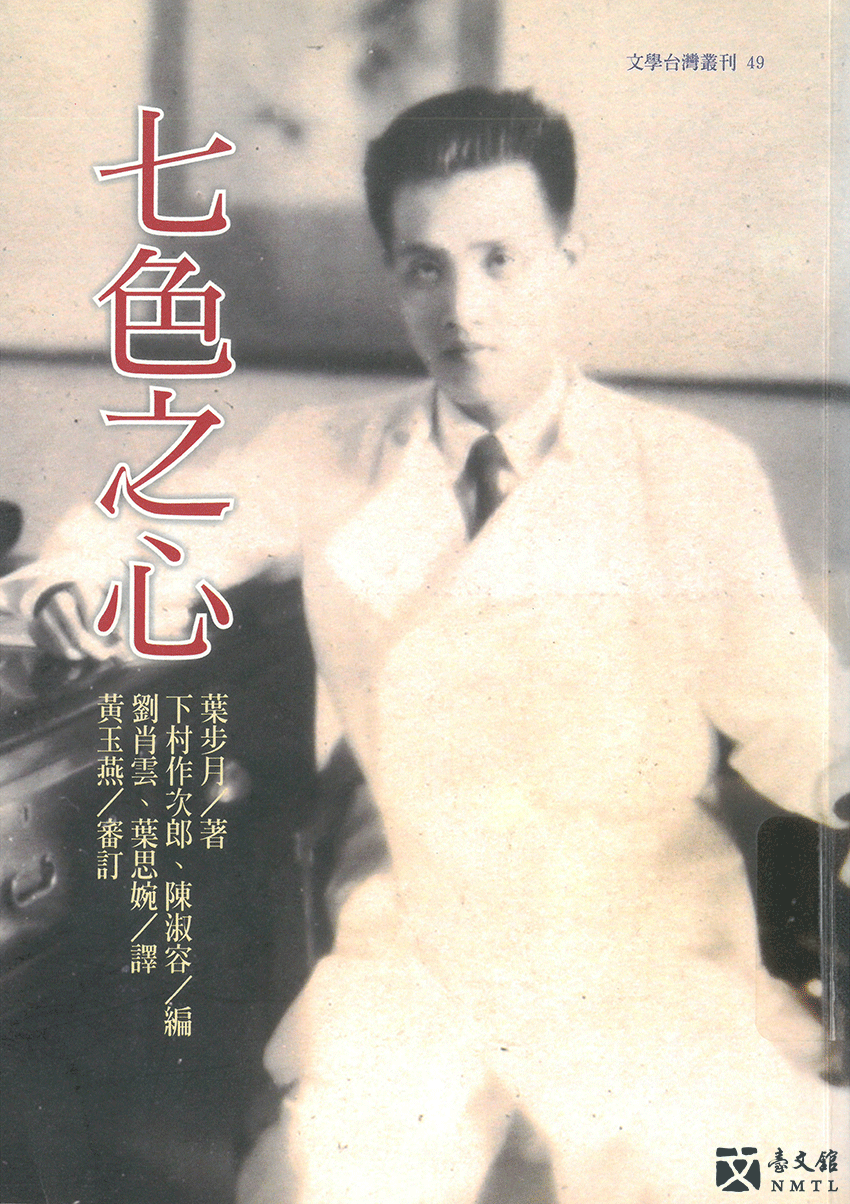
HEART OF SEVEN COLORS was originally written in Japanese, roughly between 1958 to 1960. The Chinese version was published in 2008. The story is a trilogy about a widow, Chiu Tsing, who raised her three children and helped the family regain its glory. Parts I and II (1913 – 1945) focus on Chiu Tsing's widowhood until the defeat of the Japanese. Part III (1945-1957) tells of 74-year-old Chiu Tsing's realization of the disillusionment in having a four-generation family. This was the first post-war Taiwanese clan novel series, detailing the experiences of Taiwanese people who came to face generational conflicts and divisive forces within families after going through social, ideological, and political changes. Yeh cleverly integrated a family's historical development with Taiwan's history, presenting a vivid and complete vision of the common people at that time, while illustrating the Taiwanese spirit.
The sunlight consists of 7 colors in its spectrum. When the beams of the 7 colors overlap one another, the colors vanish. The human heart has also a variety of colors. When different people's hearts unite together, will they become colorless too?
──Yeh Bu-yue, HEART OF SEVEN COLORS
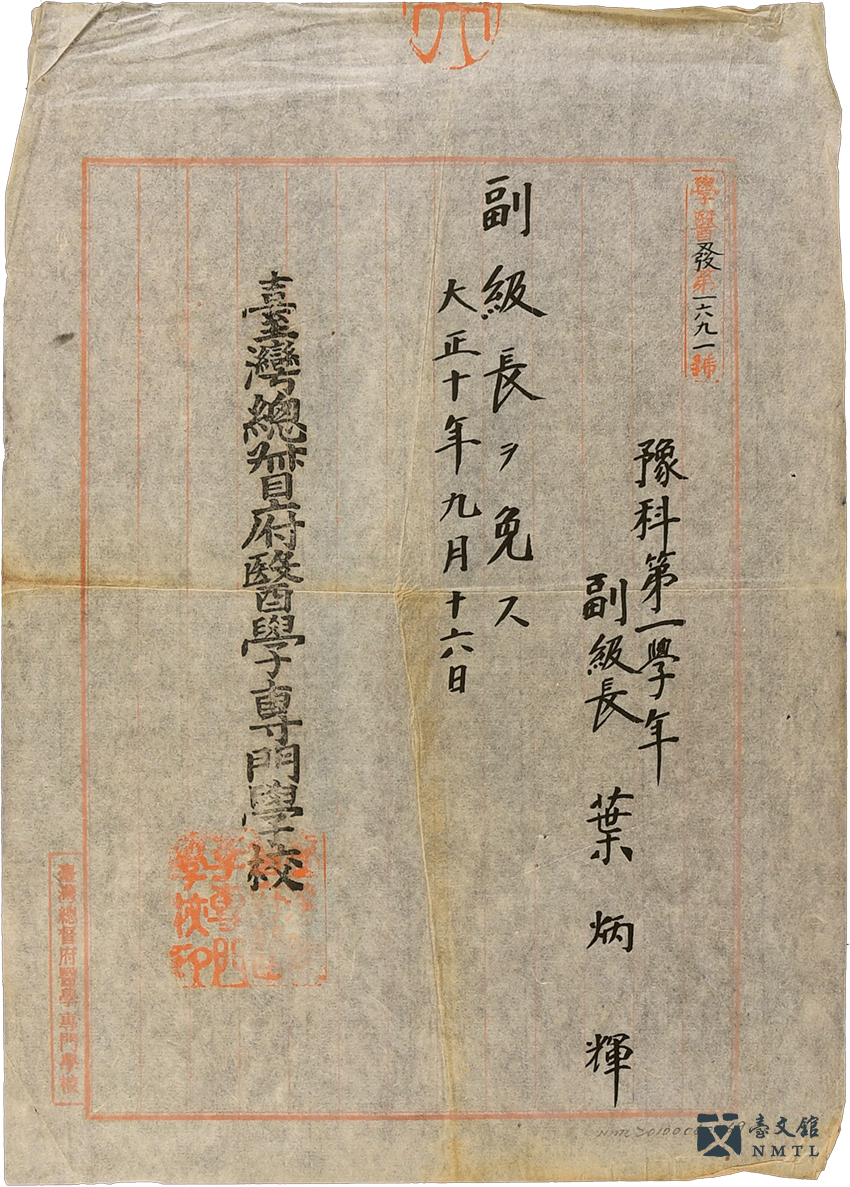
🌊 Official document Xue-Yi-Fa No. 1691, Medical Specialist School of the Taiwan Governor General's Office|1921.
Yeh Ping-hui was writer Yeh Bu-yue. This was a report in his first preparatory year of attending the Medical Specialist School of the Taiwan Governor General's Office, while serving as the Deputy Class Prefect. (Donated by the family of Yeh Ping-hui / From the National Museum of Taiwan Literature permanent collection)
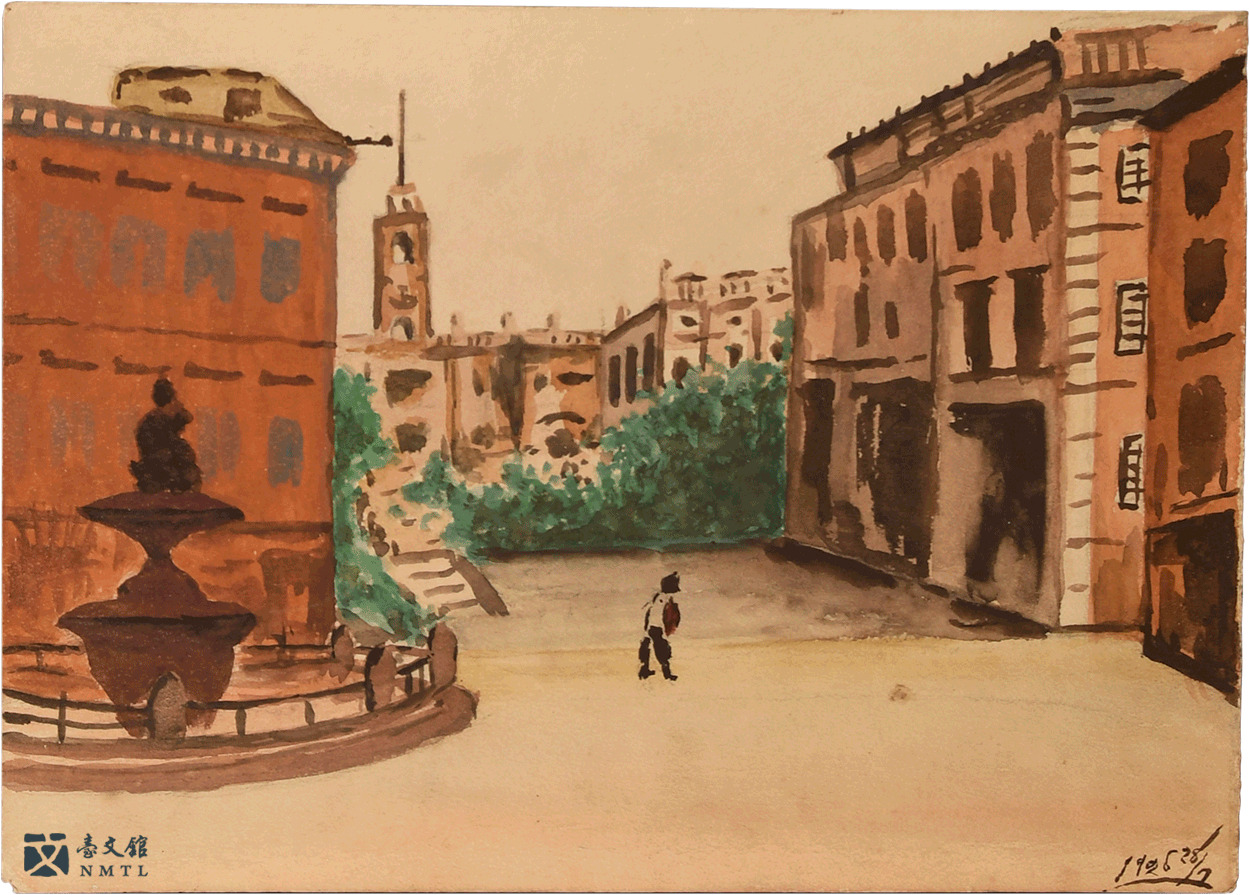
🌊 Yeh Bu-yue, LANDSCAPE PAINTING|1925. (Donated by the family of Yeh Ping-hui / From the National Museum of Taiwan Literature permanent collection)
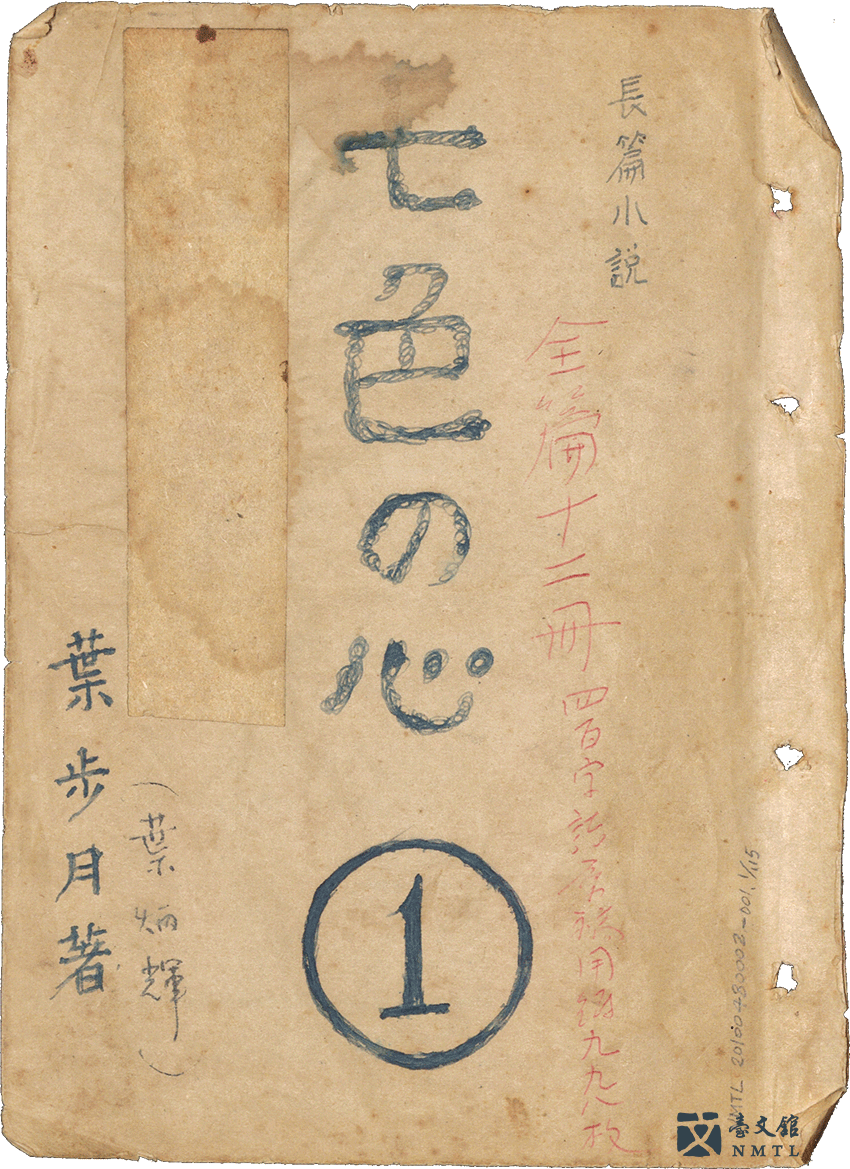
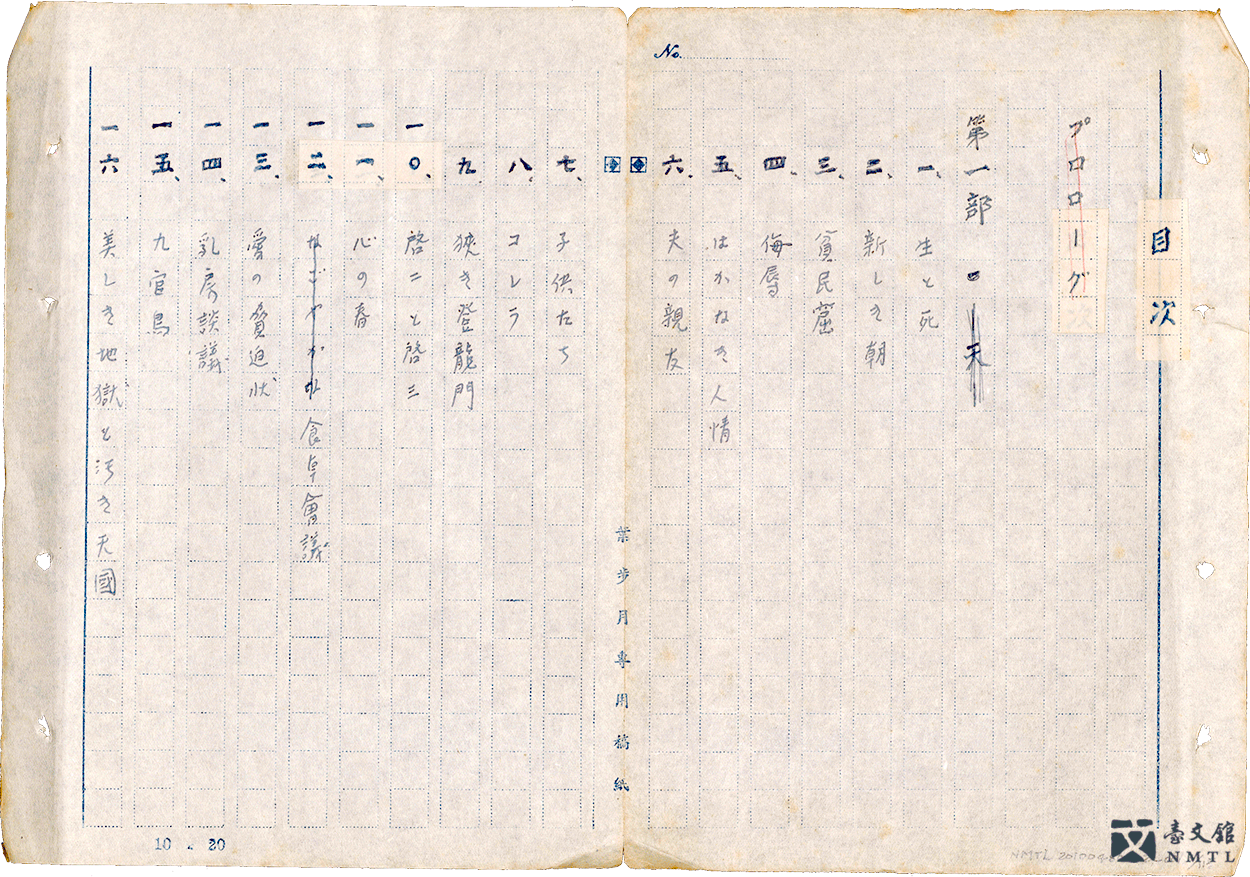
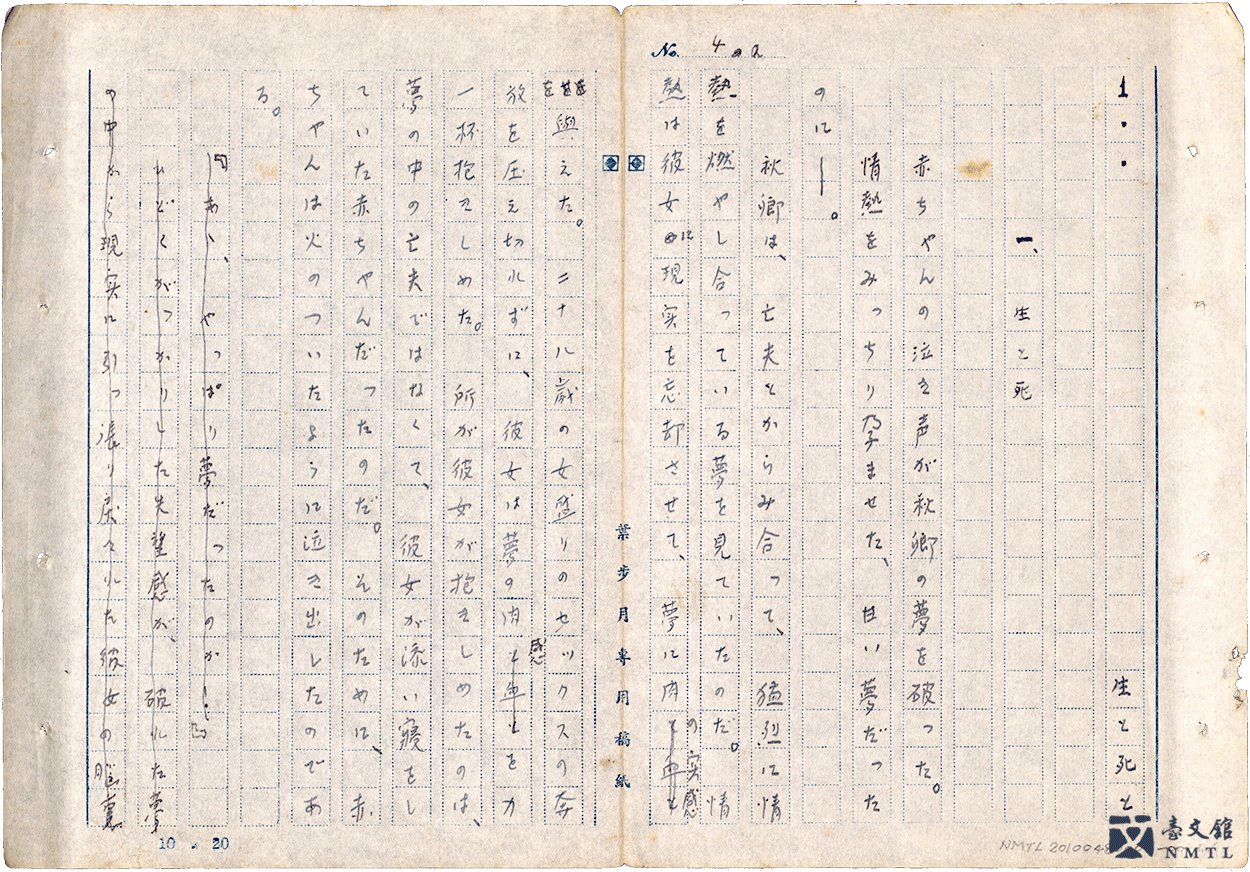
🌊 The manuscript of Yeh Bu-Yue's "Heart of Seven Colors"|"Heart of Seven Colors" was written between 1958 - 1960. It was originally written in Japanese. It is comprised of 12 volumes and contains 1,017 pages. The story begins in the prewar period and ends in the postwar period (between 1913 and 1959). It tells the family tale of widow Lin Qiu-qing through four generations. It was Taiwan's first family history novel after the war. Therefore, some critics have argued that this work should be seen as a roman-fleuve. (Donated by the family of Yeh Ping-hui / From the National Museum of Taiwan Literature permanent collection)
Chung Chao-cheng (1925-2020)

A native of Taoyuan, graduate of Changhua Normal School of Education, student of the Chinese Department in National Taiwan University. Chung had been an elementary school teacher for 30 years. Since 1964, Chung assisted Wu Cho-liu in editing TAIWAN LITERATURE AND ART, and gradually took up more literary positions. He was also an active participant of Hakka language restoration movements. He wrote mostly novels, among which TURBID WATERS TRILOGY and TAIWANESE TRILOGY were his prominent masterpieces. In 1957 Chung founded WENYOU NEWSLETTER, the first post-war platform of exchange for writers. Besides promoting Taiwanese literature through creative writing, editorial participation and cultural activities, he constantly gave encouragement to young literary writers. Chung was later praised as a literary "light bearer". His decades of hard-fought literary achievement is akin to an account of post-war history of Taiwanese literature.
📚 TURBID WATERS TRILOGY 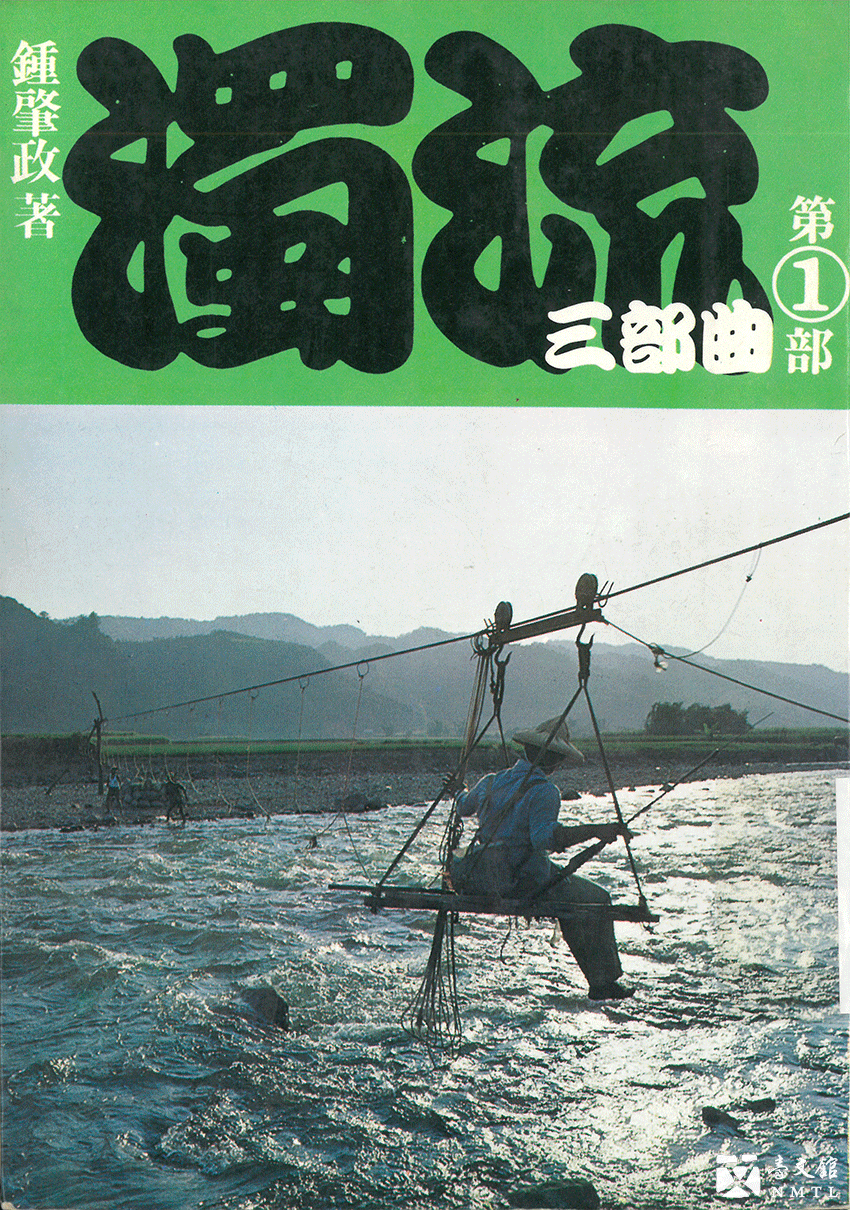
TURBID WATERS TRILOGY was written from 1961 to 1963: Part I TURBID tells of a young man from Taikokan (now Daxi, a district in Taoyuan City), Lu Chi-lung, who was a teaching assistant at an elementary school; Part II EXPANSIVE MOUNTAINS AND RIVERS describes Lu entering the army as an "apprentice soldier"; Part III FLOWING CLOUDS details Lu's post-war life back in his hometown. Chung successfully garnered the status of a roman-fleuve doyen with this trilogy. He also laid good foundations for post-war Taiwanese writers. His meticulous description of personal experiences in the course of social transformation, together with his broad visions, made this trilogy a great work with value, and as such it has also been regarded with highest literary and historical importance among Chung's works.
Oh, the flowing clouds that are forever changing, where are you drifting to? Perhaps people are looking forward to the condensation of you all, turning into steadily falling rainto nourish this drought-stricken land.
──Chung Chao-cheng, FLOATING CLOUD, TURBID WATERS TRILOGY
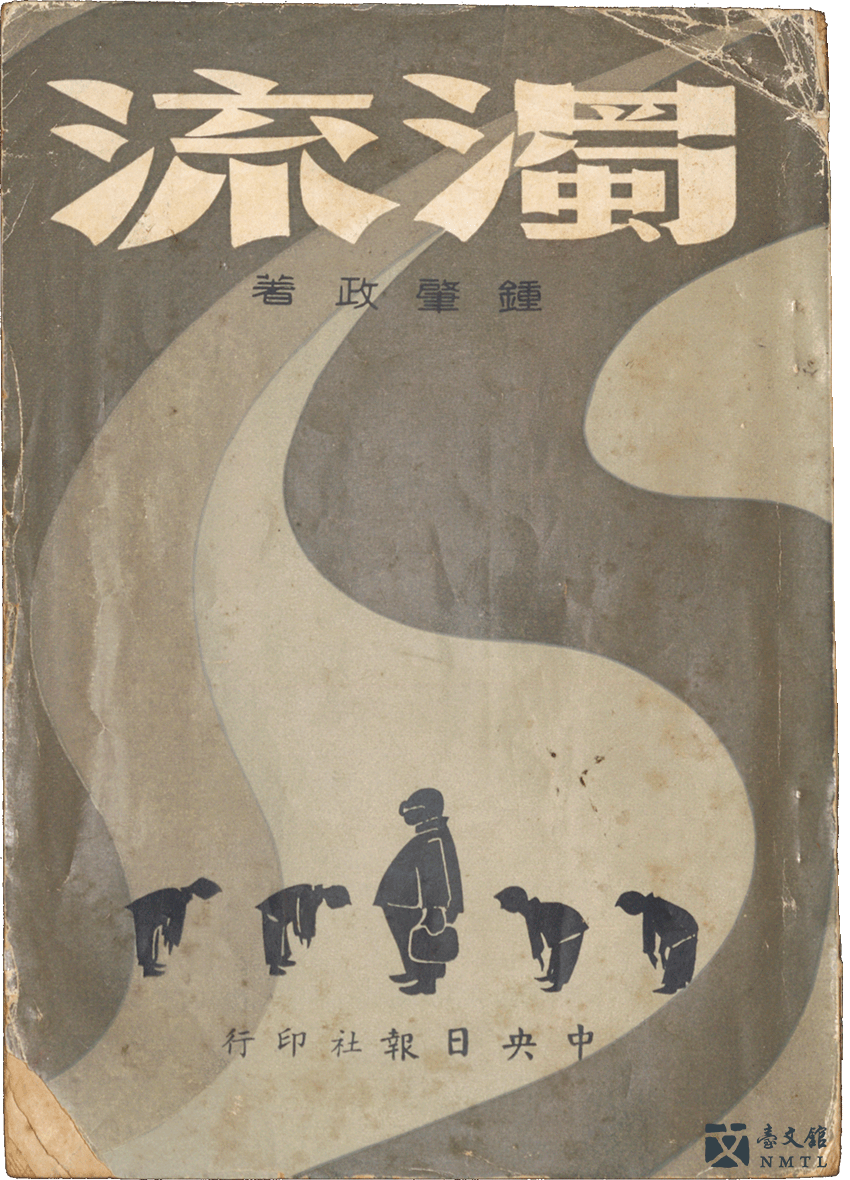
🌊 Chung Chao-cheng, TURBID|Taipei: Central Daily News, 1962.
This book focuses on the life of its protagonist, Lu Zhi-long, describing the post-war changes to Taiwanese society. It depicts those days when Taiwanese youth had to stand by for conscription, and how they felt pressured in face of the colonial policies and the education system, while topping it off with enigmatic emotions experienced in romance between the sexes. (Donated by Lin Jui-ming / From the National Museum of Taiwan Literature permanent collection)
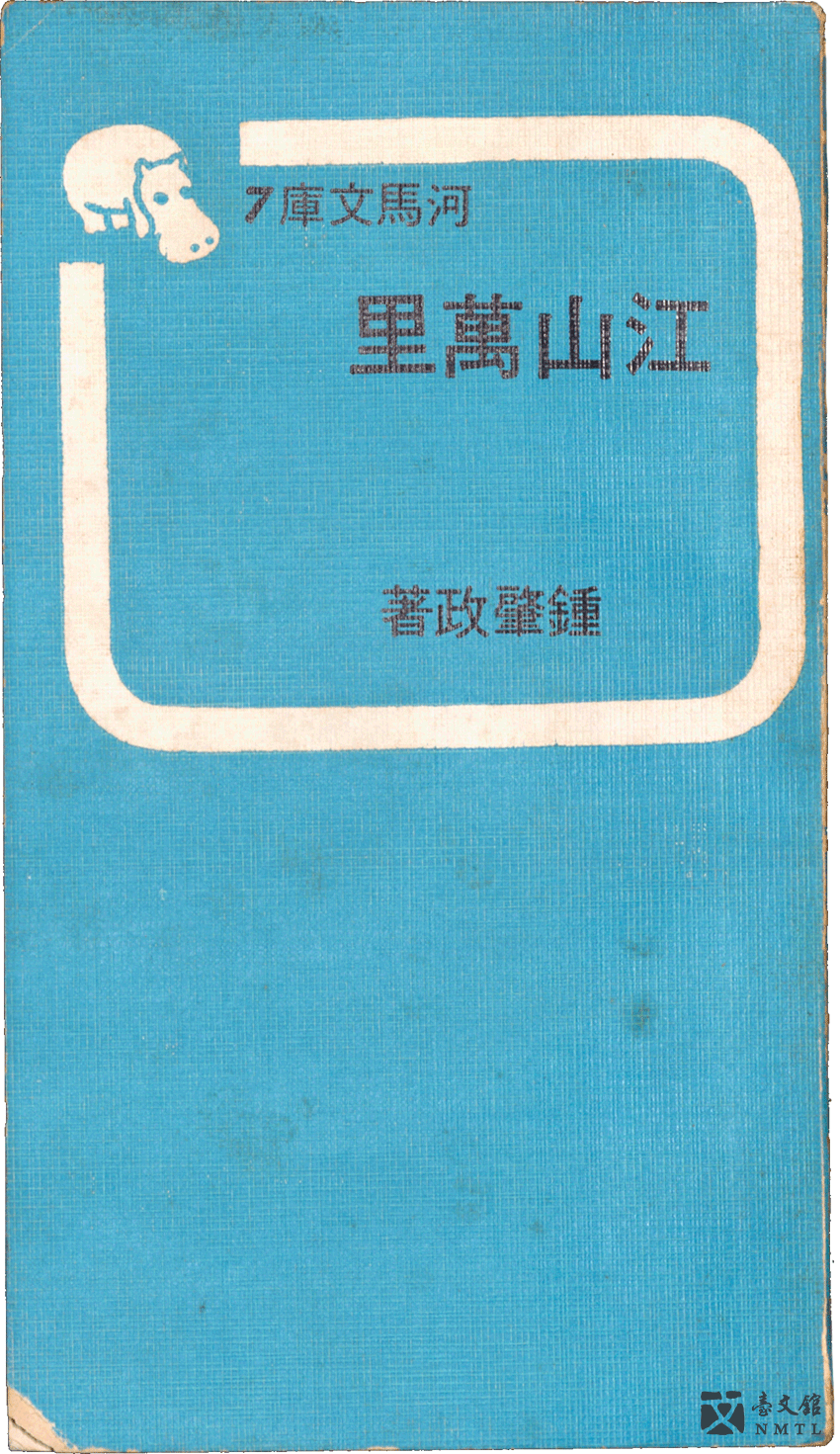
🌊 Chung Chao-cheng, EXPANSIVE MOUNTAINS AND RIVERS|Taipei: Lin Po Publishing Co., 1969.
This is a story in the time between the end of the Pacific War and the unconditional surrender of Japan. Lu Zhi-long was attending the Youth Normal School of Education. He also took part in the conscription as an apprentice soldier. Amidst the devastating effects of war and a shortage of supplies, Taiwanese were having new hope as the war was coming to an end. (Donated by Li Kuei-Hsien / From the National Museum of Taiwan Literature permanent collection)
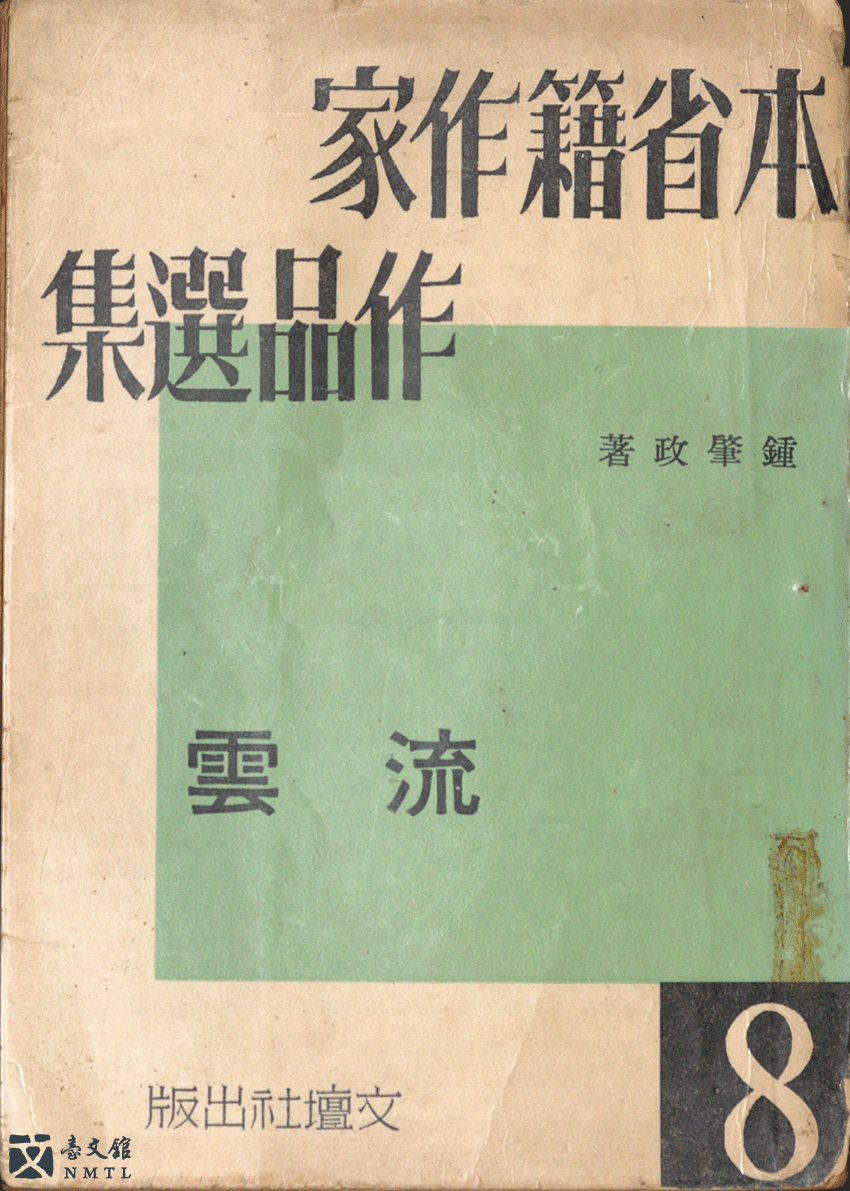
🌊 FLOATING CLOUD by Chung Chao-cheng|Wentan Publishing House, Taipei, 1965.
This book is set in the postwar period after Japanese colonial rule. By depicting the protagonist Lu Zhi-long's new life after returning to his hometown, the book illustrates how Taiwanese people shed the militarism of contemporary Japanese colonial culture and readapted to Chinese culture, lifestyles, and the Chinese language. (Donated by Lai Chih-cheng / From the National Museum of Taiwan Literature permanent collection)
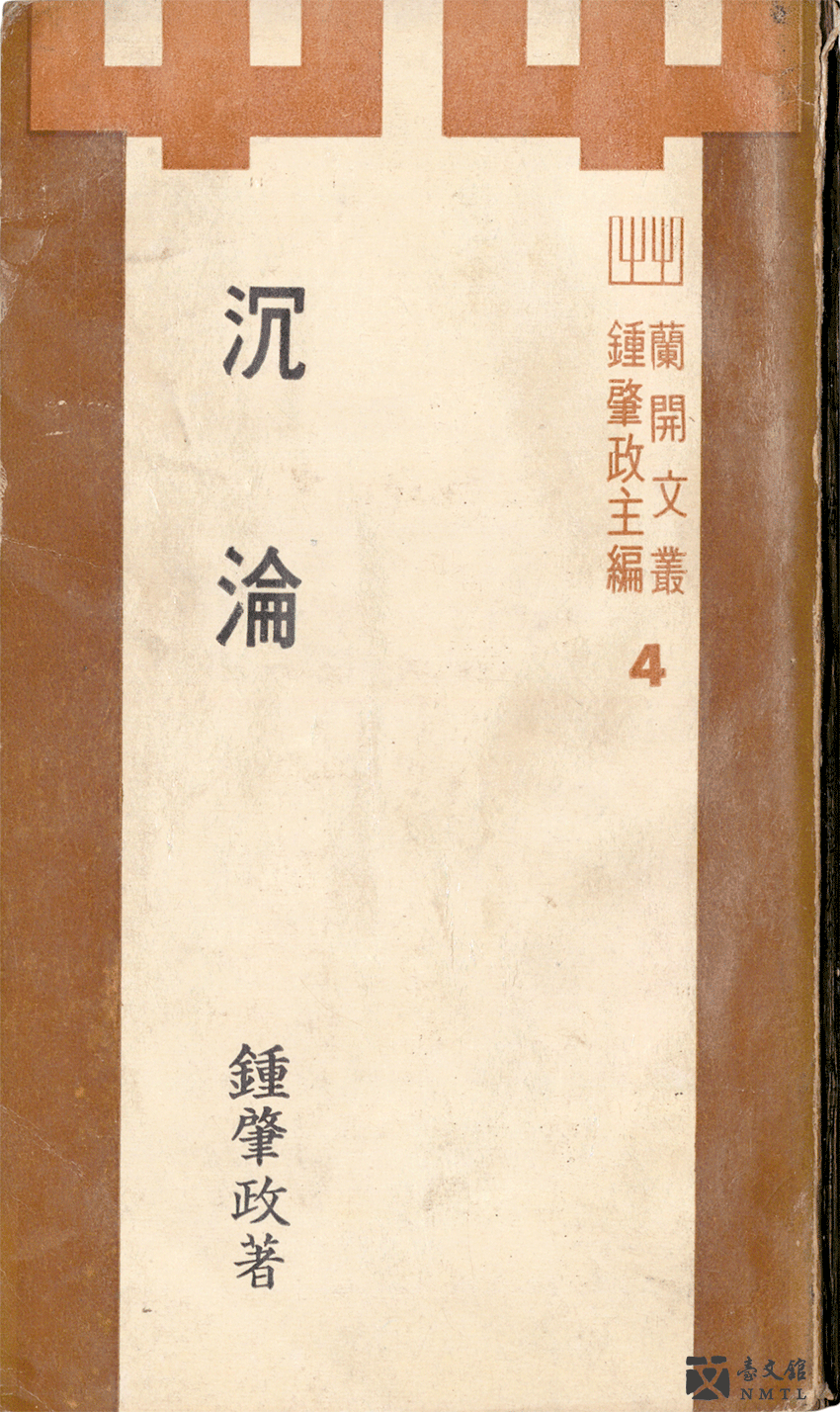
🌊 Chung Chao-cheng, SINKING (Volume 1)|Taipei: Lan Kai Book Co. Ltd., 1968.
The book is divided into two volumes, with the focus on the Lu's family clan, which was the largest one in northern Taiwan during the Japanese rule. The story describes the development of the family, including the younger generation's emotional relationships. In the end, the middle-aged generation in the family led the younger generation to organize a volunteer army fighting against the Japanese takeover. (Donated by Long Ying-zong / From the National Museum of Taiwan Literature permanent collection)
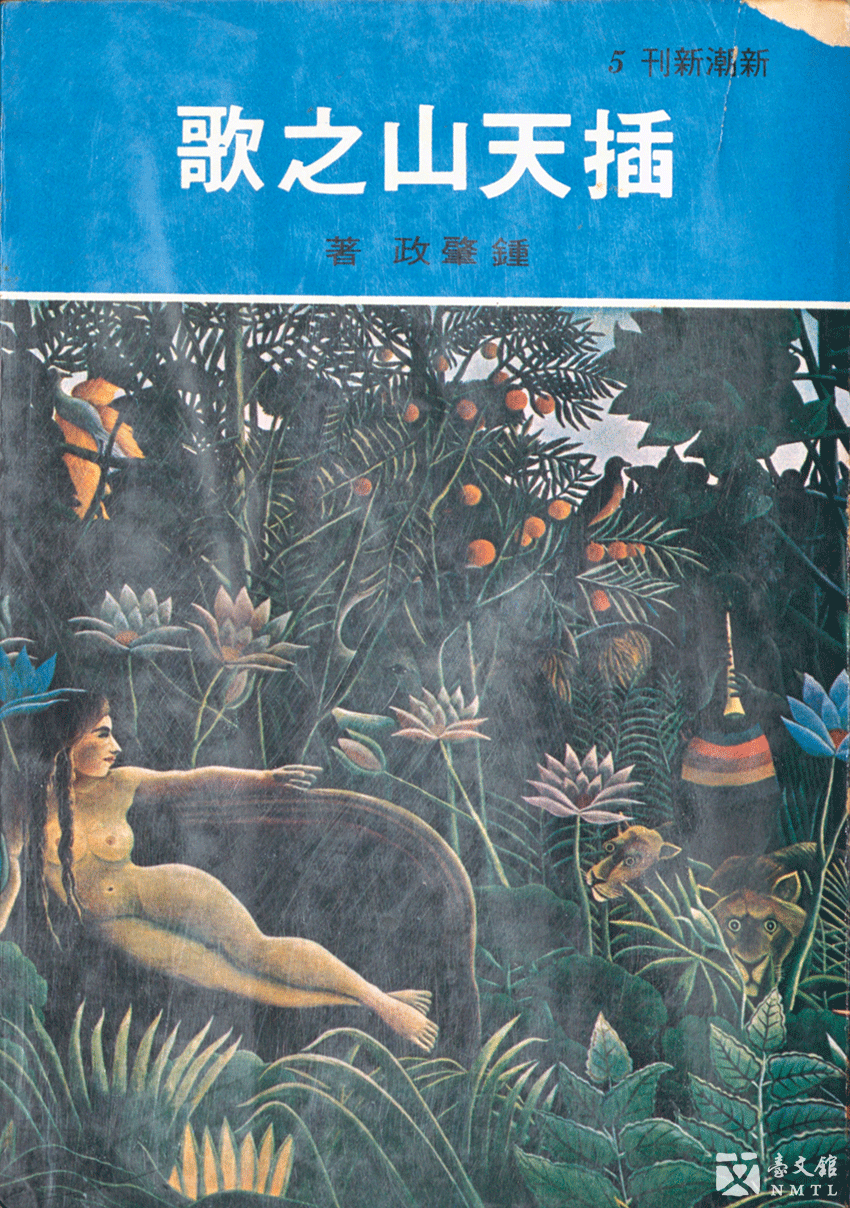
🌊 Chung Chao-cheng, THE SONG OF CHATIAN MOUNTAIN|Taipei: Chih Wen Publishing Co. Ltd., 1975.
During the Pacific War and nearing the end of the Japanese rule, Lu Chih-hsiang, a young man studying in Japan, was ready to return to Taiwan to join the underground anti-Japanese movements. To avoid being pursued by the colonial government, he escaped into the mountains under the cover of his family clan. While a fugitive, Lu met a girl with whom he developed an earnest relationship. (Donated by Li Kuei-Hsien / From the National Museum of Taiwan Literature permanent collection)
🎬 "THE SONG OF CHATIAN MOUNTAIN" Movie Trailer|2007(Producer / Hei Chu Communications Co. Ltd.; Director / Huang Yu-shan; Adaptation / Chong Chao-chen, novel of the same name THE SONG OF CHATIAN MOUNTAIN; Source / Director Huang Yu-shan)
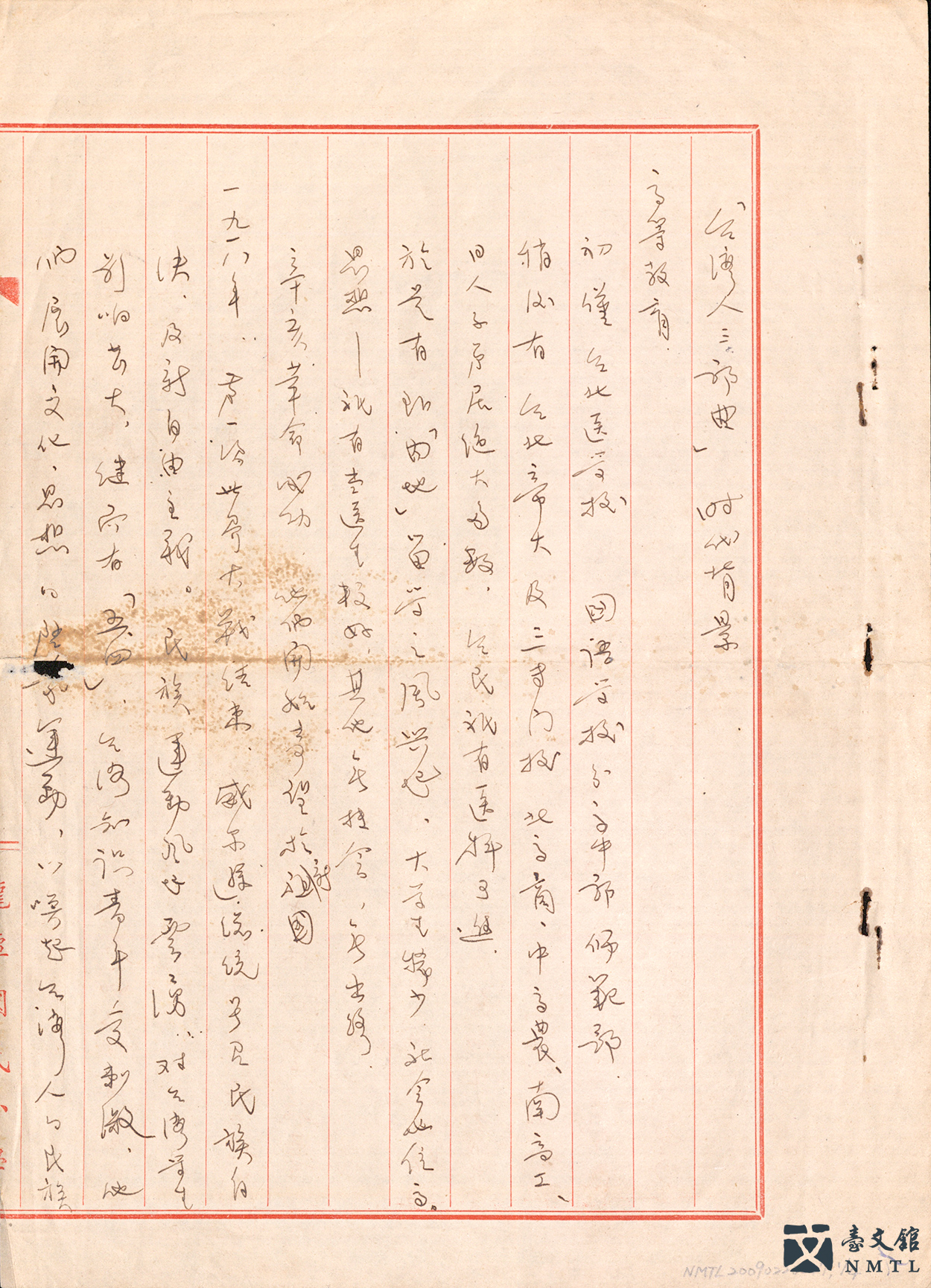
🌊 Chung Chao-cheng, the historical background of TAIWANESE TRILOGY, manuscript|(Donated by Chung Chao-cheng / From the National Museum of Taiwan Literature permanent collection)
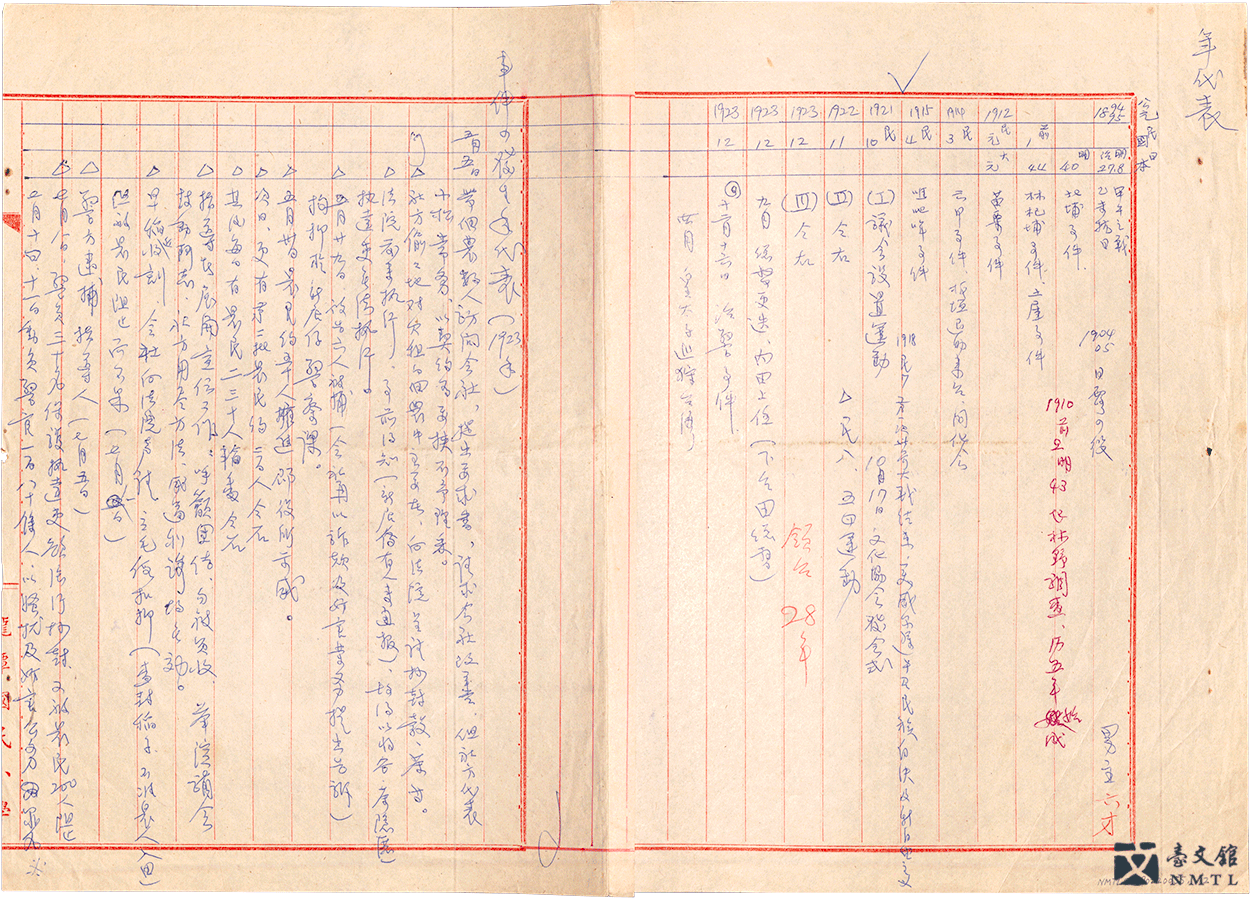
🌊 Chung Chao-cheng, conceptual notes (chronological table) of THE SONG OF HEAVEN AND OCEAN in TAIWANESE TRILOGY, manuscript|(Donated by Chung Chao-cheng / From the National Museum of Taiwan Literature permanent collection)
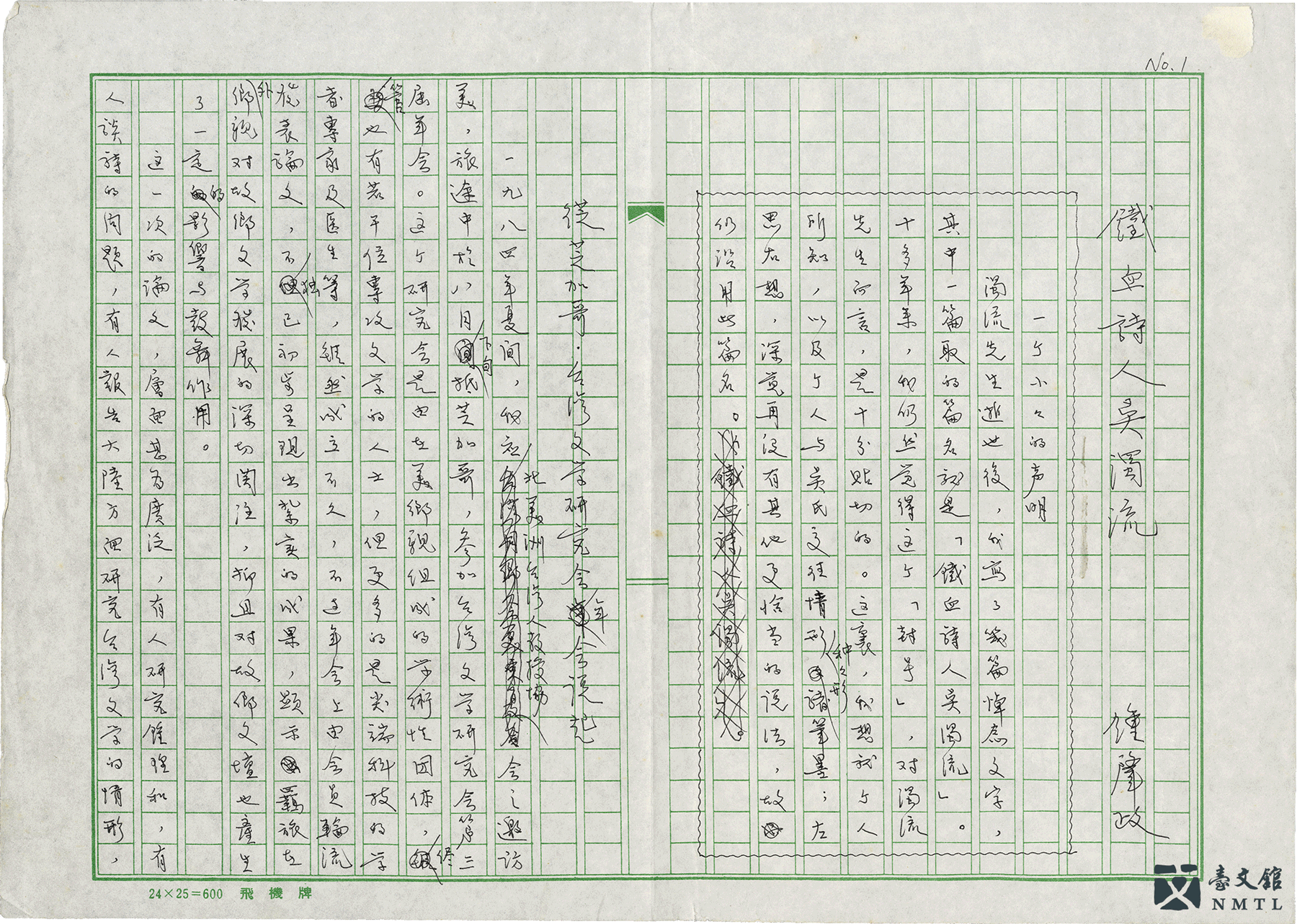
🌊 Chung Chao-cheng, WU CHO-LIU, THE ADAMANT POET, manuscript|Date of work completion was unknown.
Chung Chao-cheng and Wu-Chuo-liu were literary confidants with an age gap of 25 years. Chung described Wu as "an adamant poet" to exemplify Wu's specific literary style, and to affirm Wu's determination spirit towards his creative writings. After Wu passed away, Chung took up TAIWAN LITERARY AND ART magazine. Chung's Romans-Fleuves can be regarded as having a spiritual inheritance from Wu. (Donated by Chung Chao-cheng / From the National Museum of Taiwan Literature permanent collection)
Q&A
Q:Which is the earliest Roman-Fleuve in Taiwan?
A:HU CHIH MING, by Wu Cho-liu. It was renamed ORPHAN OF ASIA.
The first and earliest part of LONELY SAIL TRILOGY was HU CHIH MING, which was completed in 1945 and published in 1946. It was later renamed ORPHAN OF ASIA to avoid confusion with Ho Chi Minh, the leader of the Communist Party in Vietnam (of which the Chinese characters were exactly the same). The story was translated into Chinese by Fu Enrong, Chang Liang-tse and Huang Yu-yen, et al.
Note: When the Japanese were defeated in World War II in 1945, Taiwan was handed over from the Empire of Japan to the government of the Republic of China.
